
- Visiting the Fort de Barchon in Liège, Belgium
By andrew - September 16, 2014 (Updated: March 22, 2019)
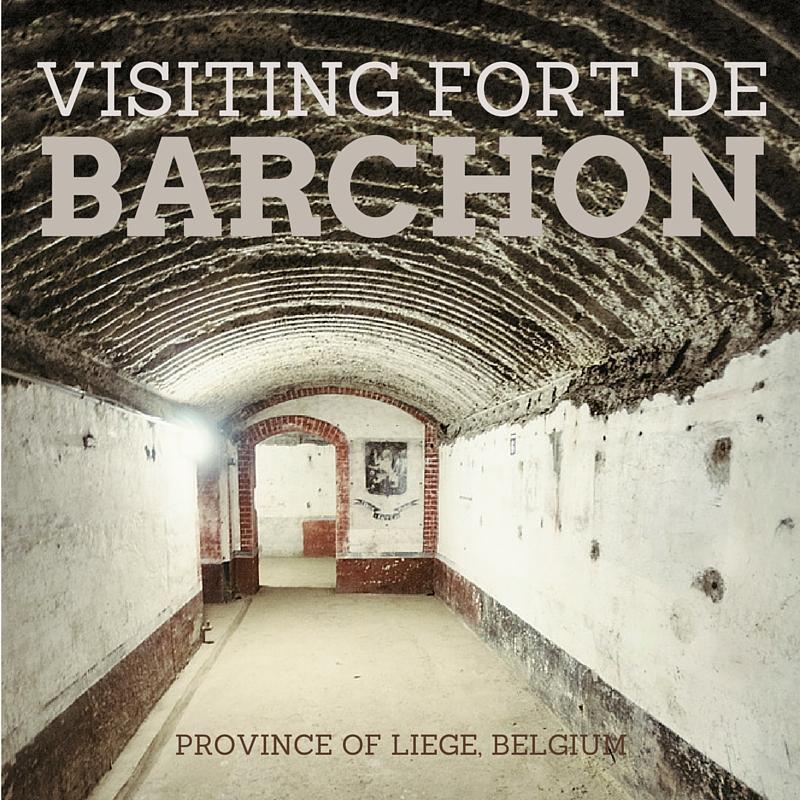
Visiting the ruins of Fort de Loncin was remarkable. Because it has remained untouched, since its destruction, it is a powerful tribute to the men who lost their lives. However, one of my (many) faults is my need to understand things. I wanted to know how Loncin was built and experience, for myself, how it felt to walk through that concrete bunker.
Fort de Barchon , to the north-east of Liège, is an almost exact copy of Fort de Loncin and it survived the war largely intact. I read about Barchon, and many of the other forts, in a brochure from the Province of Liège Tourism board. Barchon intrigued me because it is a twin of Loncin and both the Germans (1915 – 17) and the Belgians (early 1930s) had renovated it.

Problems with the Liège Forts
In August 1914, the forts around Liège and Namur fought a valiant battle, delaying the German army’s advance and providing the British and French precious time to take up positions. However, as Fort de Loncin demonstrates, there were several major design flaws with the architecture of the forts.
- The concrete was not poured correctly and did not include any steel reinforcement, making the forts relatively weak, especially to larger calibre guns like the 42cm “Big Bertha.”
- The toilets, barracks, and kitchens were built into the back wall of the fort, requiring soldiers to exit the central massif (bunker) into the open, unprotected ditch and run across the 10-metre gap to the outer wall. When the fort was under fire, the troops had to improvise toilets inside the central massif.
- The fort’s guns still used black powder and when they were firing, the fort filled with noxious fumes. Men died of asphyxiation, holding their positions.
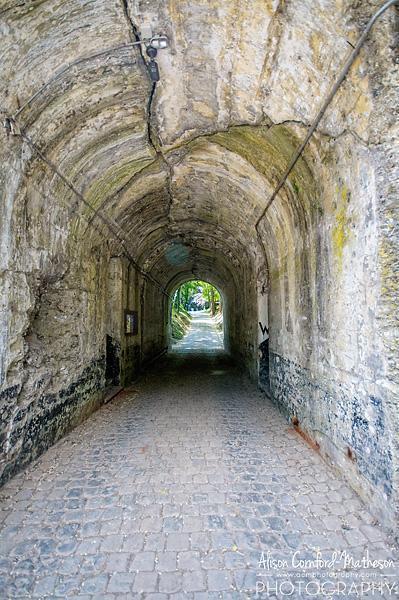
Cracked but still standing – Fort de Barchon’s entrance gate.
Renovating the Forts of Liège
After the forts were captured, the Germans addressed a number of these flaws. In 1915, German engineers started to clean up and modernize some of the forts, to defend Germany against an Allied invasion.
The engineers reinforced the ceilings, dug tunnels to bring in fresh air, installed electric fans to pull air into the fort, replaced the steam engines with diesel engines, and moved the toilets and kitchen inside the main bunker.
Despite these preparations, the Germans never used the forts for defence and, after the war, the Belgian Army returned. It wasn’t until the early 1930s, as Europe slid closer to another war, Belgium again started modernizing some of the forts, including Barchon.

Diagram of the Liege Forts in the Barchon museum
After the war, the Belgian army reviewed the surrenders of each fort around Liège. They concluded the main reason for surrender was the lack of fresh air. The noxious fumes from the guns and the improvised latrines resulted in unbearable living conditions that heavily impacted morale.
Touring the Fort de Barchon
During our tour of Fort de Barchon, it was easy to see the different stages of modernization. In fact, if you don’t pay attention, you will probably bang your head!
The only practical way to strengthen the roofs of the tunnels and rooms was to apply new concrete and steel reinforcements to the interior. This dropped the ceilings so low the corridors feel confined, and many of the doorways are less than four feet high! It’s a stark contrast to the lofty corridors and rooms at Loncin.
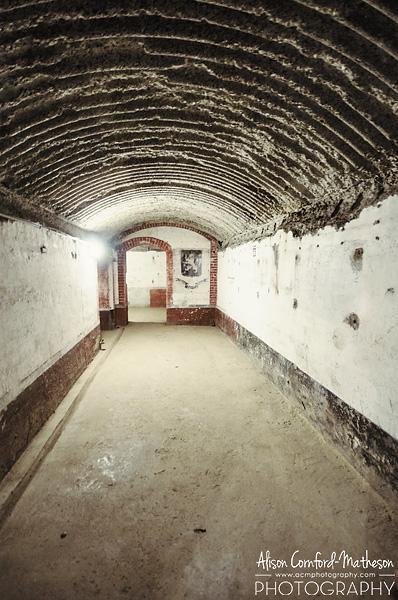
Mind your head! The Ceilings and doorways are low.
To improve air quality, the Belgian army built air towers, which provided both fresh air and an observation point. Our guide showed us where the ventilation tunnels entered the fort and where the diesel generators were installed.
To help reduce the fumes, he explained, the guns were upgraded to use an explosive charge that created less smoke. He also showed us the toilets, moved into the central massif by the Germans and modernized by the Belgians in the 1930s.
We then proceeded to the powder magazine that exploded at Loncin. Sitting beneath an infantry exit door, on the roof of the fort, the magazine was not buried far enough to offer sufficient protection. In the 1930s, a new gallery was dug beneath the central massif, the ammunition storage moved, and the old magazine converted into the command post.
Today, the room may look empty, but the walls contain period graffiti, such as an airplane, a Roman legionnaire, and a ship. It is an interesting glimpse of the soldier’s world.

A model of the Fort de Barchon
Next, we ascended into the assembly hall. This is where the majority of the men died at Fort de Loncin when the ceiling collapsed after the explosion. Our guide explained, at Barchon (and other forts renovated in the 1930s) the assembly hall was deemed unsafe, so it was closed off. Large piles of dirt, from the excavations beneath the fort, were placed in the hall to help stabilize the structure when under bombardment.
I couldn’t help but think about Loncin. The halls were identical, but the explosion at Loncin turned this room into a grave. I can’t imagine how loud and claustrophobic it must have been when under fire. Nor is it possible to imagine the massive concrete ceiling collapsing. I could only hope the death of the soldiers at Loncin was a quick one.

Inside the small but well-maintained museum inside the Fort de Barchon
Leaving the hall, we entered one of Barchon’s larger gun emplacements. The gun and metal works are gone, having been sold as scrap-metal sometime after the Second World War. Now, the gap in the roof delivers a vertical shaft of light into an otherwise underground world. With the clouds drifting past above us, we could see nature starting to creep back in and take hold.
We ended our tour by walking out onto the roof via one of the former infantry exits. Again, nature has dug in and taken over. It felt like we were walking through a park. There is so little of the fort visible to remind us of the concrete behemoth below our feet or the battles fought around us.

Barchon from above – nature is reclaiming her space
Today, like other forts, the current owners have repurposed the exterior. In the case of Barchon, the site now features an adventure park, complete with zip lines. The history and the current use makes for quite a contrast!
Fort de Barchon is a great example of how the forts of Liège were adapted based on the lessons of the First World War. Barchon fought again, in May 1940, tying up German forces for over a week. Visiting the fort helped me understand Loncin, but better yet, it demonstrated how thinking had evolved between the wars.
The Importance of Belgium’s Memorial Tourism Sites
Returning to the car, our Province of Liege Tourism host asked, why this fort, or any of the forts, interested me. My answer is hard to put into words. Of course, the history interests me, especially the evolution of artillery and how fortifications changed from walled forts to bunkers. But visiting a site like Loncin or Barchon is more about feeling and emotion. Dates and names don’t make anyone feel anything; they are distant and clinical.

The thick walls are gradually being covered in greenery
Standing inside Barchon, listening to the echoes of our feet, hearing the stories shared by our guide, I feel the history. I can empathize. I can let myself become overwhelmed by things I can’t even begin to fully appreciate: the noise, the chaos, the tragedy, the camaraderie, the fear, the sadness, the joy. All these contrasts are rolled into one place and one moment.
These places and their stories humble me. They make me realize I am a privileged person. I have never had to fight a war or defend my country. But my life could not be what it is, without the sacrifices of many people, including the Belgians who manned these forts and my brother, currently serving in the Canadian Armed Forces.
So, in a way, visiting these forts is a type of pilgrimage; a way for me to silently remember and thank those who have fought so I could have this life.
Finally, these forts are almost the last remnants of an age of fortifications. For millennia, people have built strongholds, castles, walls, and fortifications, to protect themselves. But the Second World War’s mechanization increased destructive power, and airborne capabilities meant large, static fortifications have become irrelevant. Therefore, I feel it is important to visit these sites before they’ve decayed further and the stories disappear.
Obviously, not everyone shares my perspective. Nonetheless, visiting any of the Liège forts is a worthwhile day trip, if only to learn more about the events or the people.
Have you visited Fort de Barchon or one of the other Forts of Liège? Please share your experience in the comments below or send me a note via our contact page. I’d love to know what you recommend and why.
Fort de Barchon Rue du Fort B-4671 Barchon (Blegny)
Tours of Fort de Barchon are offered on the 2 nd Sunday of each month, from April to November and costs €4 per adult, €2 for children (8-12 years). Note: tours are typically offered in French, Flemish, and German. Please contact the organizer ahead of your visit to check if English is possible.
To discover more forts or sites to visit, check out the online Memorial Tourism brochure created by Province of Liège Tourism.
For a full listing of our articles like this one, visit our Memorial Tourism in Belgium page .

We’d like to extend our thanks to the Province of Liege Tourism for inviting us to tour the Fort de Barchon at our request. All opinions are, as always, our own.
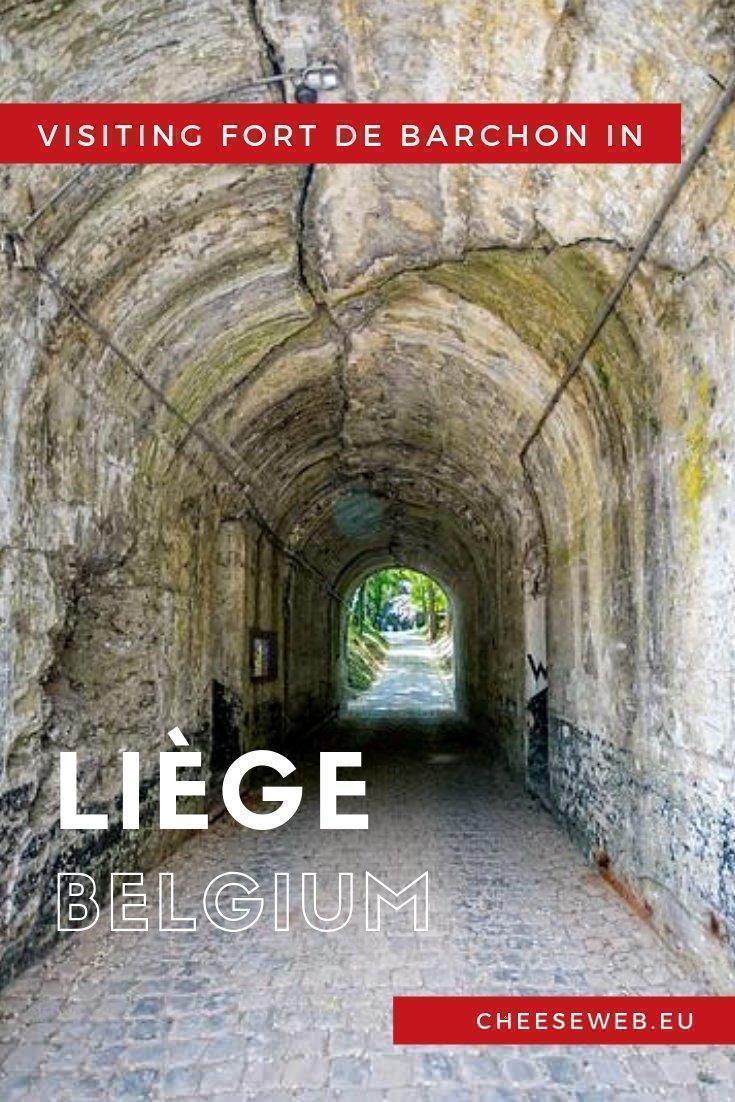
Like this article? Save it to Pinterest!
- Recent Posts
- Wise Review: How to Save Money on International Currency Transfers - January 20, 2017
- Our 50+ Best Belgium Gifts Online - November 29, 2016
- Review: Crowne Plaza – Le Palace Hotel and Restaurant, Brussels, Belgium - September 30, 2016
- Visiting The Battlefields of Verdun, France
- Exploring the Battlefields of Ypres, Belgium
- Ypres World War One Museums
- Visiting the Fort de Loncin WWI Memorial Site, in Liege, Belgium
- Visiting the Atlantic Wall Museum, Oostende, Belgium
- Bastogne WW2 War Museum, Belgium
- Visiting the Bastogne Barracks and the Vehicle Restoration Centre, Wallonia, Belgium
- Visiting Fort Eben-Emael in Liège, Belgium
- Top 10 War Memorials for Canadians in Europe
A Unique Travel Guide

The Liège Guide
Our top picks
Things to do in liège.
- Ninglinspo Walk
- Reinhardstein Castle
- Montagne de Bueren
- Tunnel of Love
- Lake Robertville
Hiking in Liège
Get out in nature.
- Panorama on the Warche Hike
- La Fagne de la Poleur Hike
- Bayehon Waterfall Hike
- Tros Marets Canyon Hike
- Hiking the Valley of the Hoegne
- Three Valleys Hike
- The Ourtal Route
- Lake Butgenbach
- Lake Gileppe
- Waterfalls of Coo
History & Culture
Get cultural in liège.
- Opera Royal de Wallonie
- Saint Bartholomew's Church
- The Mirror City
- Parc Boverie
- Fort de Loncin
Discover nearby provinces
To further explore.
- Walloon Brabant
- Flemish Brabant
- East Flanders
- West Flanders
Explore the Map
Why go to liege.
Liege is an economic powerhouse of Wallonia and a cultural one too! Liege’s university and artsy city vibes give this province a busy but cultured atmosphere. The capital of Liege is known for its beautiful staircase Montagne de Bueren and the view from the top. There’s a ton of variety with things to go and interesting places to go all over the province. Go out into the fresh countryside for some of Belgium’s prettiest walks!
What you need to know about Liege
Culture experiences.
Liege is known as the cultural capital of Wallonia for a reason. You’ll find most of the artsy vibes in the city. There are plenty of museums of all kinds from pretty fine art at Musée de la Boverie and the galleries to a history of local life. Head into the cities of Liege for a night at the theatre, to see dance performances and local festivals.
Industrial past
Liege was THE spot to be in the Industrial Revolution. This province has a history of hard work in its industry and is one of the few places left in the country with a steel industry. That’s why it’s called Liege! Back in the day, Liege was known as la cité ardente in French (English: "the fervent city"). This name also reminds people of its long history of struggle and rebellion. Liege has seen many battles and war!
So many walks
Liege might be known for its awesome city experiences, but there’s plenty of walks, hikes and cycling routes in nature we need to tell you about. The high Fens or “hoge venen/hautes fagnes” area is one of the most popular spots for hikers in the country. One of the top favourites in the province is the Ninglinspo Walk with paths from 7 km to 14.6km to suit every ability level. Ninglinspo is known for its beautiful views of the Ardennes. Take a break from Liege’s cities to its nature for stunning surprises of views, streams, and forests.
Learn from history
Liege’s past is one of the most interesting in Belgium. This province borders Germany, so it went through a lot in both world wars. This is where it all started! The Battle of Liège was the very first battle of WWI. 32,000 Belgian troops battled it out against 50,00+ German soldiers in a bloody struggle. Liege’s stubborn spirit won out and they were able to delay Germany by 18 days, an effort that was highly praised by the Allies across Europe. You’ll find lots of details in Liege’s museums, statues throughout the city, and the memorial site of Fort de Loncin.
Liege’s cities you need to know
Liege - the cultural heart of Wallonia and the capital of the province. Known for its unique staircase, artsy sights, and industrial past.
Jalhay - a must visit to experience Liege’s nature. Come see the beautiful Lake Gileppe and hike the valleys.
Malmedy - town known for its lively carnivals and tragic Malmedy Massacre in 1944 during the Battle of the Bulge. It’s a great starting point for beautiful hikes in the High Fens area.
Aywaille - this town’s name literally means “area full of water” and it sure does live up to it!home to the beginning of the beautiful Ninglinspo Walk through the best of Liege’s nature, streams and more.
Amay - a cute smallish city known for the beautiful 16th century Jehay-Bodegnée Castle. Come see its Italian gardens in the charming Belgian province of Liege.
Liege is a lively province in every season. Come in May to September to experience the best of Liege’s weather. May typically has the best sunny days without much rain. June to August is when Liege is at its busiest.
Getting There
Liege is easily reached in a car, especially the capital city of the same name. Liege city is a great starting point for an exploration of the province as it’s actually at a crossroads of many motorways, including the E25 and the E40. Depending on which direction you’re coming from to Liege, it will be different on the signposts. In Flanders, Liege is labelled “Luik”, “Lüttich” in Germany, and “Liège-Centre” in Luxembourg.
When you’re coming to Belgium by plane, you’re most likely landing at Brussels airport. It’s pretty easy to get to Liege city from Brussels by catching the train; depending on when you land it could take one or two trains to get to Liege. Budget airlines such as Ryanair might drop you off at Maastricht-Aachen Airport which is a 30 minute drive from Liege.
Liege city’s train station is Liège-Guillemins. From Brussels airport, it’s only about an hour and 20 minutes to Liege on the train. You can get to Liege on the intercity trains at the major train stations across Belgium. Trains from Paris, Frankfurt and other big cities of Europe also drop you off at Liege. From there, you can get to the smaller cities of the province though be sure to check ahead of time as some cities are harder to reach via public transport.
Getting Around
Walking is a great way to get around Liege’s cities and towns where many things to do are within walking distance. Liege’s cities are generally pedestrian friendly, but may have some hilly areas not so wheelchair friendly. Outside the cities, walking is popular for hikes but might require a car or public transport to get to the starting point.
Getting around the province by car is one of the best options to get around, though you might need to check your map or ask a local for help occasionally. Getting around Liege city by car is doable, although different from other cities. The roads in Liege were built along the river and its branches, so roads don’t always make sense. Other than that, there are plenty of parking spaces in the city or for Park & Ride not too far out.
Buses in Liege are run by TEC . Not many buses run after midnight in Liege city, so you might have to get a taxi after a night out partying. There’s free maps and schedules available from the bus station, but you can also check online easily. Getting around Liege by bus is pretty easy and affordable. Some of the sights further out of the city usually have a bus or train stop nearby, but are generally harder to reach. Give yourself some extra time to spend if you plan to get around by public transport.
Liege city is decently cyclist friendly, but we recommend avoiding the major roads. Roads marked as “sauf/bike symbol” mean you can use a one-way street either way. Liege does have some higher climb areas which makes cycling outside the city centre less beginner-friendly. You can rent a bike from Pro Velo for 24 hours for 14€. Cycling is a fairly popular activity in the province, so you won’t have too much trouble getting around by bike.
Essential info
Languages: Walloon French
Emergency numbers: Police urgent: (101), Fire, ambulance, police: 112
Tourism office
Visitez Liège
Website: http://www.visitezliege.be/
Address: Quai de la Goffe 13, 4000 Liège, Belgium
Telephone: +32 4 221 92 21
Email: [email protected]
Malmundarium & Malmedy Tourist Office
Website: www.malmedy-tourisme.be
Address: Malmundarium & Malmedy Tourist Office, Place du Châtelet 9, 4960 Malmedy
Telephone: 0032 (0)80 799 668
Share this find!
POINTS-NOEUDS

- Homepage >
- Discover our nodes! >
- Our route ideas >
- Cycling and hiking tours >
The fort tour
- Presentation
- FICHE_INFO_SIMPLE_CRITERES
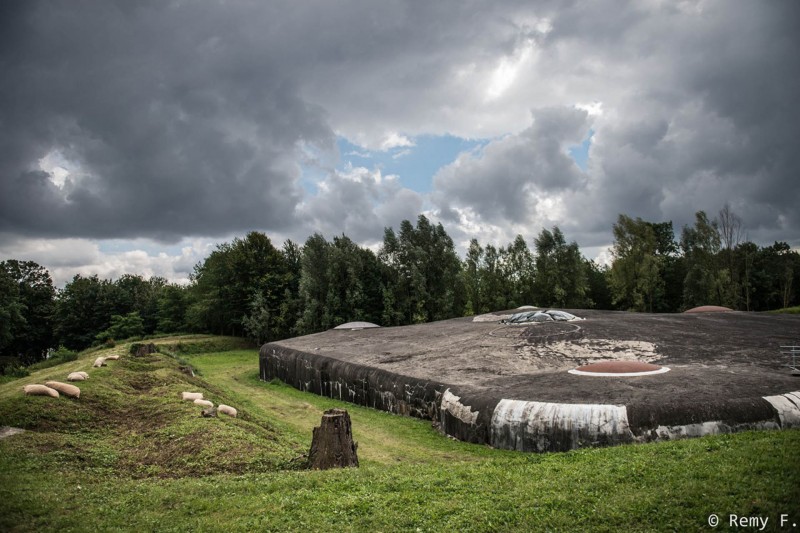
- Difficulty : Easy
- Elevation : 64 m
- Distance : 20 km
- Start : Rue Maréchal Foch – 4430 Ans
- Node points to follow : 46 → 66 → 67 → 62 → 45 → 46
- Download the walk
- PDF File - Cycling and hiking tours - The fort tour (825.75 Ko)
- GPX track - Cycling and hiking tours - The fort tour (8.13 Ko)

- Lieu de départ Ans
- 10 Remarkable Tourist Attractions to Visit and Things to Do in Lisburn
- 11 Interesting Things to See and Do in Rothenburg ob der Tauber, Germany
- 12+ Astonishing Tourist Attractions to See and Things to Do in Nantes, France
- 14 Stunning Tourist Places to Visit and Things to Do in Helsingborg, Sweden
- 12 Incredible Attractions to See and Things to Do in Saariselkä, Finland

15 Must See Tourist Places and Things to Do in Liège
Liege is a city in Belgium and the capital city of its eponymous province. The city sits in the valley of river Meuse where it meets with river Ourthe. The top things to do in Liege , Belgium include exploring history, architecture, and art. The city used to be the industrial and economical backbone of the Wallonia region. You can learn more about the region and its culture at the Museum of Walloon Life. It is one of the most popular Liege attractions . This museum gives insight into the region’s politics, culture, economics, industry, religion, and art.
Many of the best places to visit in Liege , Belgium are resultant of its industrial progress. There are coal mines, steel factories, and manufacturing museums in the city to explore this aspect of Liege’s history. Though they are not among the top Liege tourist attractions , visiting at least one of these places will tell you where the wealth and the consequent culture of the city come from.
The wealth of the city is reflected in several palaces, chateaus, forts, and churches. These are some of the most beautiful things to see in Liege adorned with a variety of architectural styles. The prominent design elements you will get to see in major historical buildings include baroque, Gothic, and renaissance. You can delve even deeper into the city’s history through Liege’s tourist attractions like the archaeological museums and the city’s regional history museum. The city also has zoological, transport, and aquatic museums as well.
Another major aspect of Liege sightseeing is art exploration. The city has museums dedicated to historic, modern, and contemporary artworks. There are also museums exhibiting private collections and galleries promoting regional artists.
This Blog Post contains affiliate links. If you purchase anything from that link then I may earn a small part of the commission and for that, you do not need to pay any extra amount.
Table of Contents
The Best 15 Tourist Attractions to Visit in Liege in 3 Days (Trip Itinerary)
1. museum of walloon life.
This museum is dedicated to the history and culture of the Walloons, the native ethnic group of Belgium. It is one of the best places to visit in Liege, Belgium to learn about regional history and folklore. It covers a variety of subjects including geography, history, politics, culture, art, craft, fashion, economy, and so on. You will have at least 2 hours to tour this museum.
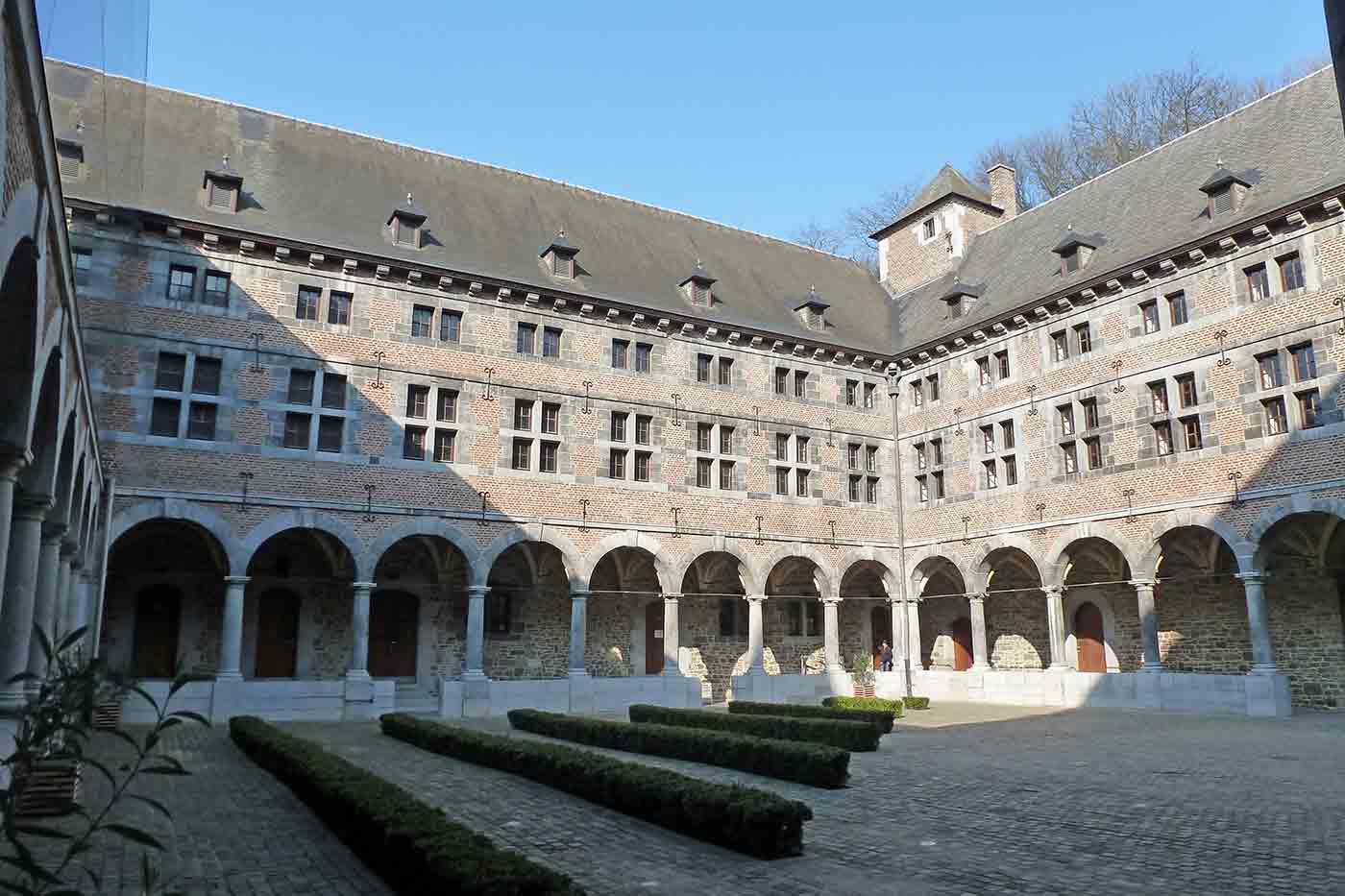
2. Coteaux de la Citadelle
This area is one of the most important historical neighbourhoods in the city. You will get to explore several top things to see in Liege, Belgium while exploring this area including historical homes, courtyards, terraces, monuments, and vantage points. You can dedicate an hour from Liege sightseeing to this area.
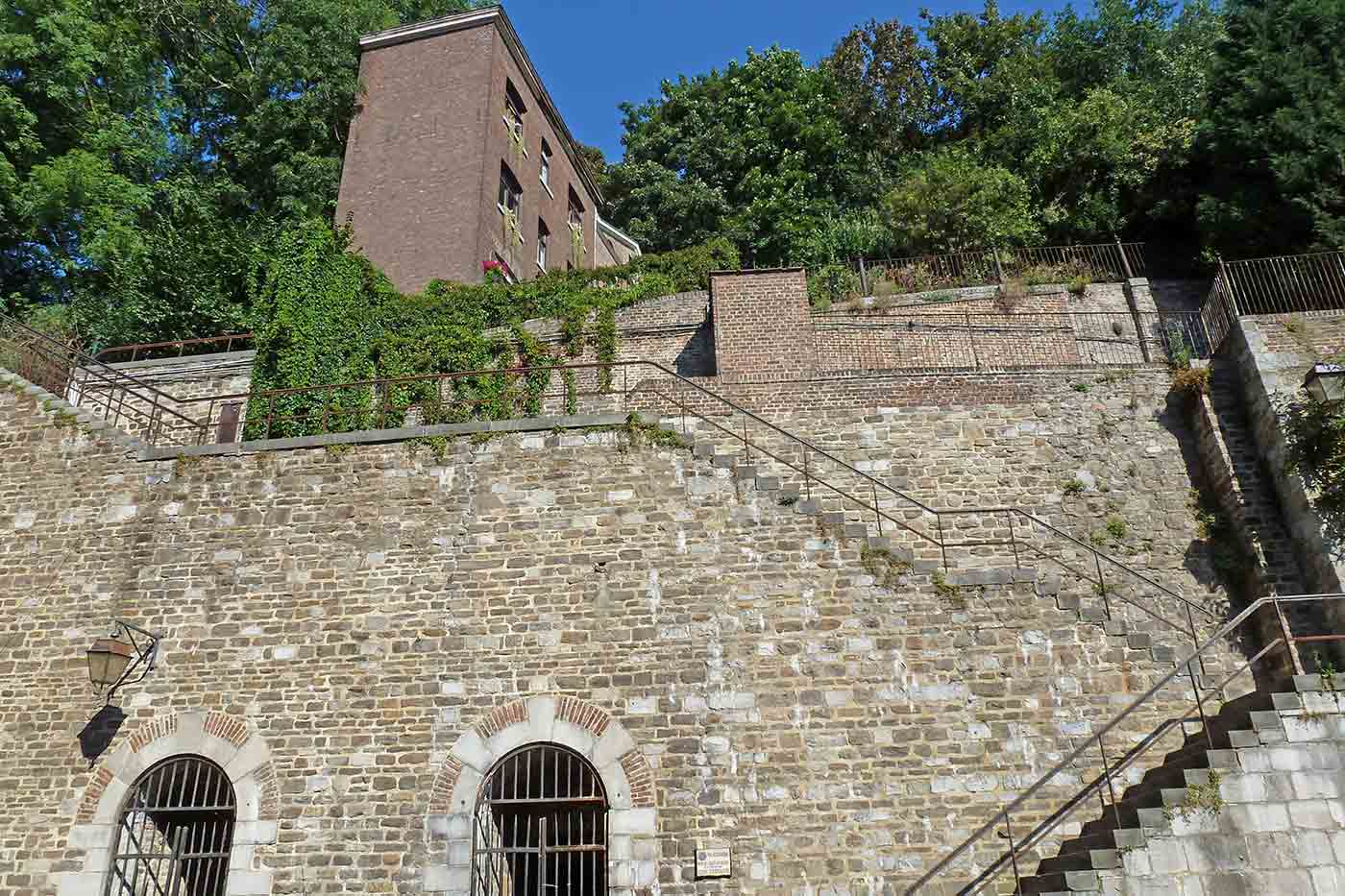
3. Montagne de Bueren
This 374-stepped staircase connects the city center to the old citadel. It was first built in the 19th century for soldiers to easily access the city in the event of an invasion. It is one of the most important historical Liege tourist attractions. You would need 30 to 45 minutes for this climb.
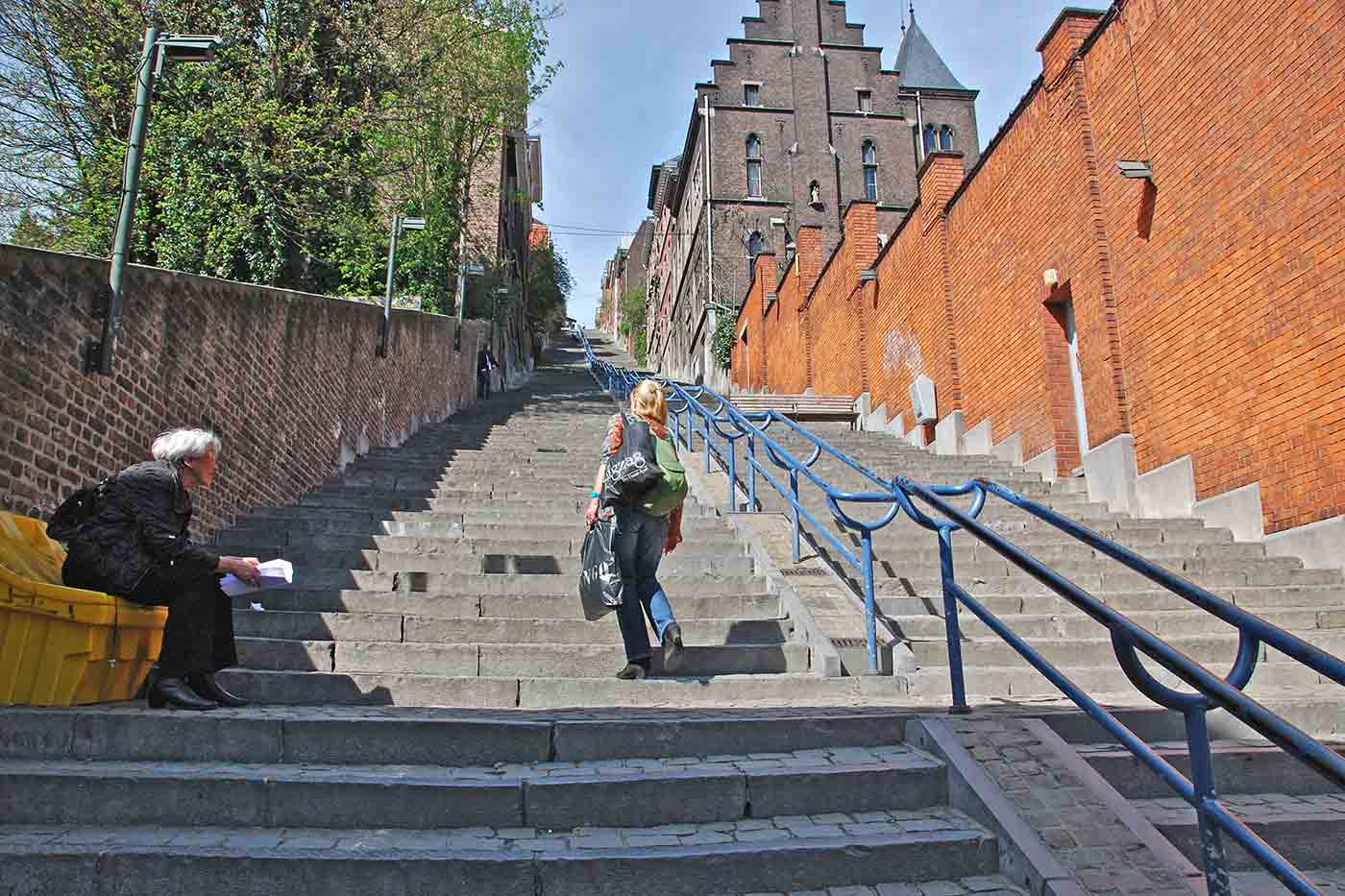
4. Saint Bartholomew’s Church
This church was built in the 12th century with a mason Romanesque style of architecture. It is popular among Liege attractions not only for its aesthetics but also for its cultural significance to the city. The interior of the church features sculptures, stained glass windows, classic furniture, a large organ, and several other artistic elements. You will need an hour to explore this church when you visit Liege, Belgium.
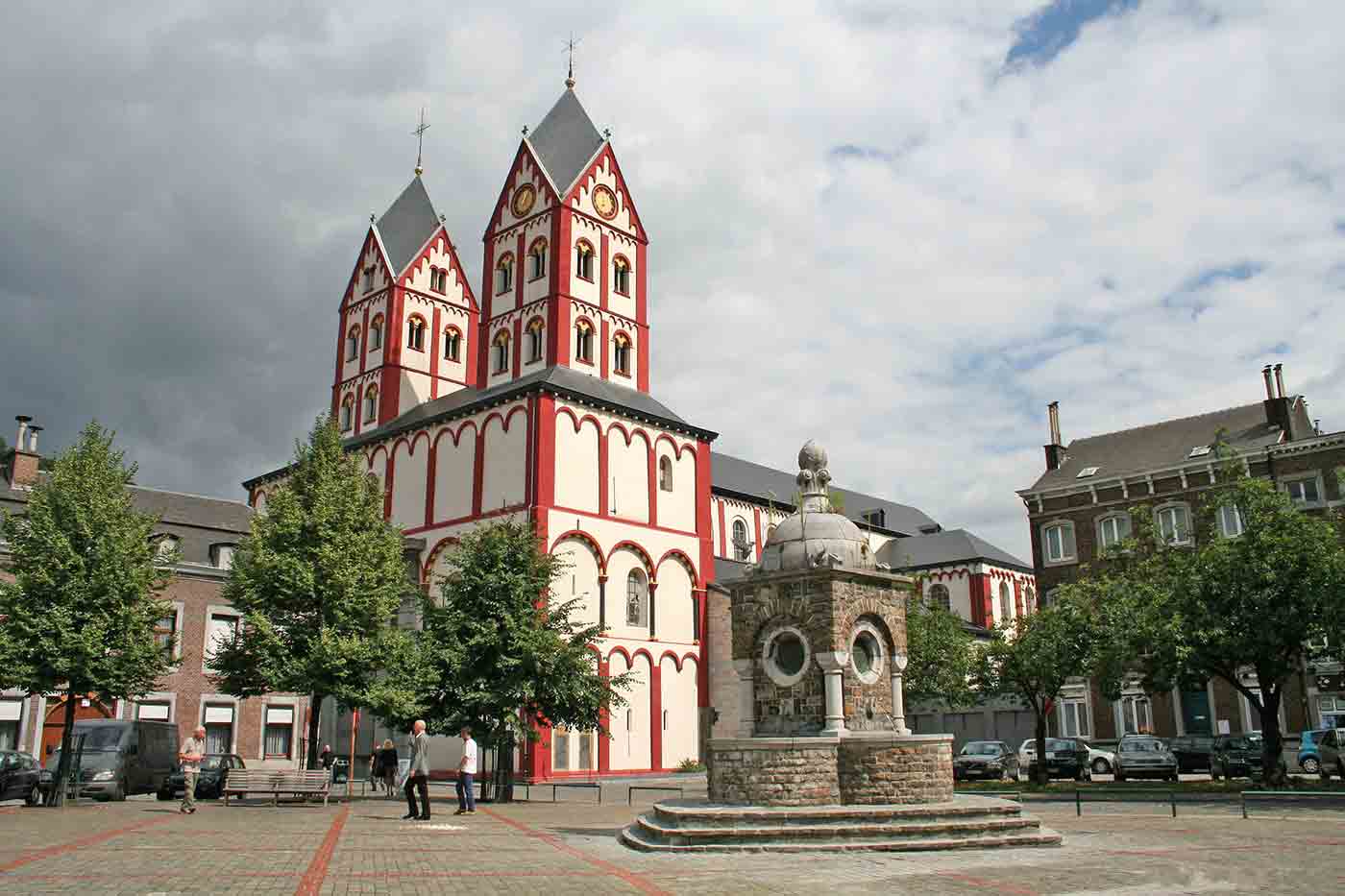
5. Le Grand Curtius Museum
This museum exhibits a wide variety of collections including weapons, religious items, artifacts, artworks, archeological exhibits, and so on. The museum is housed in a 17th-century building built in the mason renaissance style of architecture. It will take you about 2 hours from Liege travel to tour this museum.
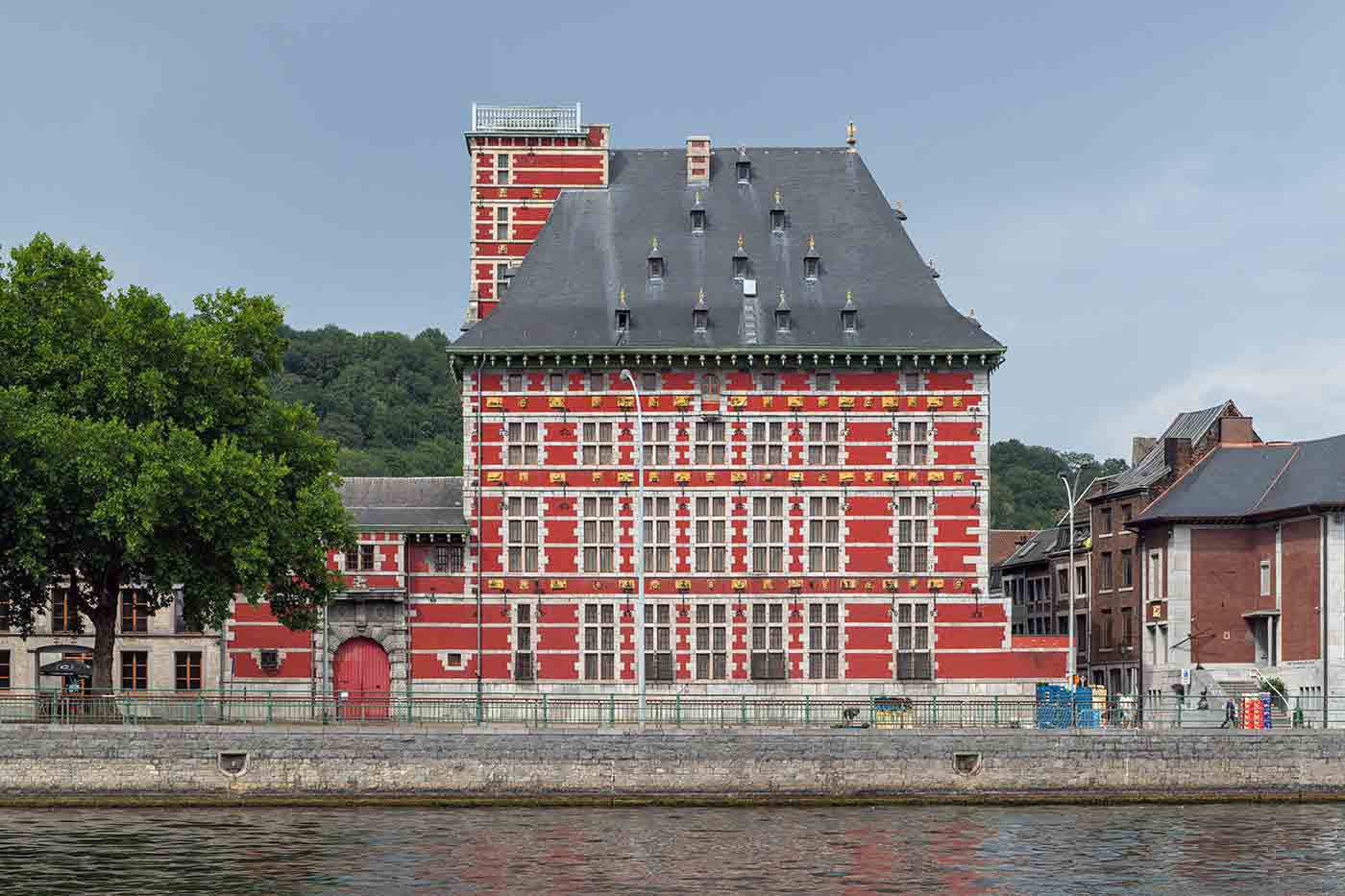
1. Liège-Guillemins Railway Station
This central railway station of the city was built in 2009. It is renowned for its futuristic-looking architecture. It was designed by architect Santiago Calatrava and is the most striking modern monument among Liege Belgium tourist attractions. You will need about half an hour to explore this station.
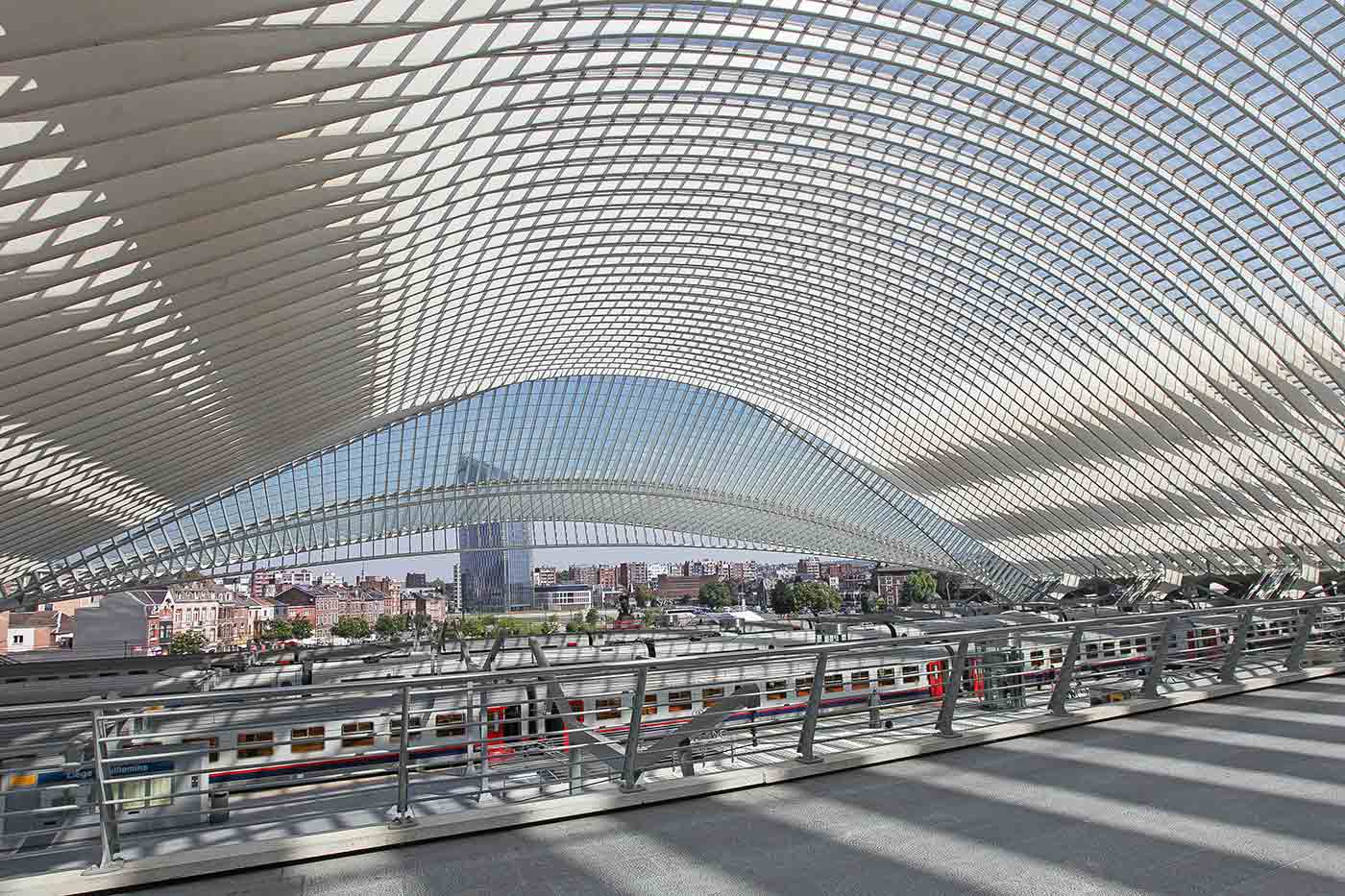
2. La Boverie
This fine arts museum exhibits works from the Renaissance period to the present day. It is included among Liege’s must-see places for exhibiting works by masters such as Picasso, Lambert Lombard, Gerard de Lairesse, and many more. You will need 2 hours to tour this museum.
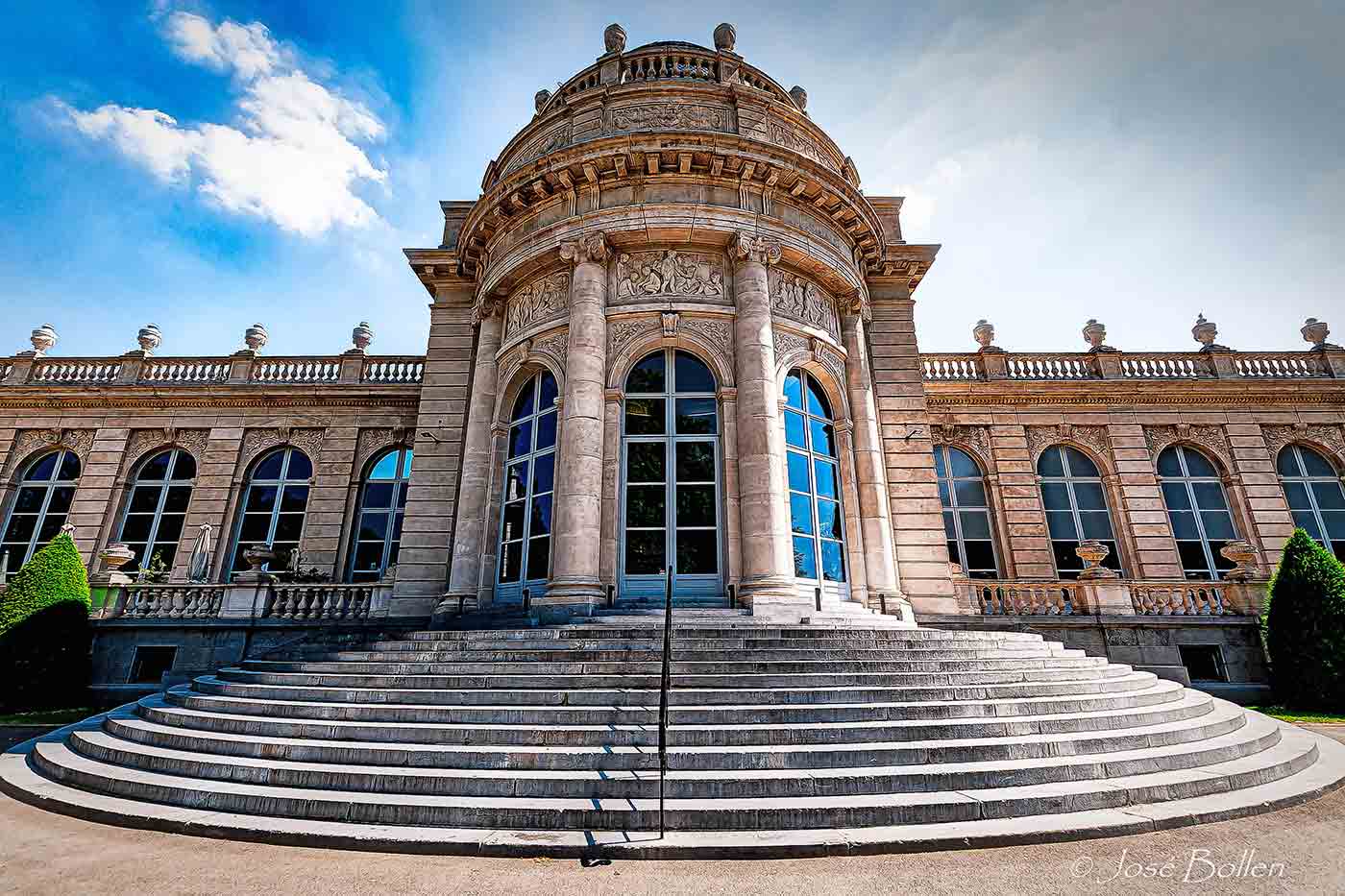
3. Boverie Park (Parc de la Boverie)
This large public park has green spaces, strolling lanes, picnic spots, a convention center, and 2 museums. It is the hotspot for some of the best things to do in Liege, Belgium. The park has been part of the city since the 14th century and it also exhibits some renowned sculptures. You will need at least an hour to explore it.
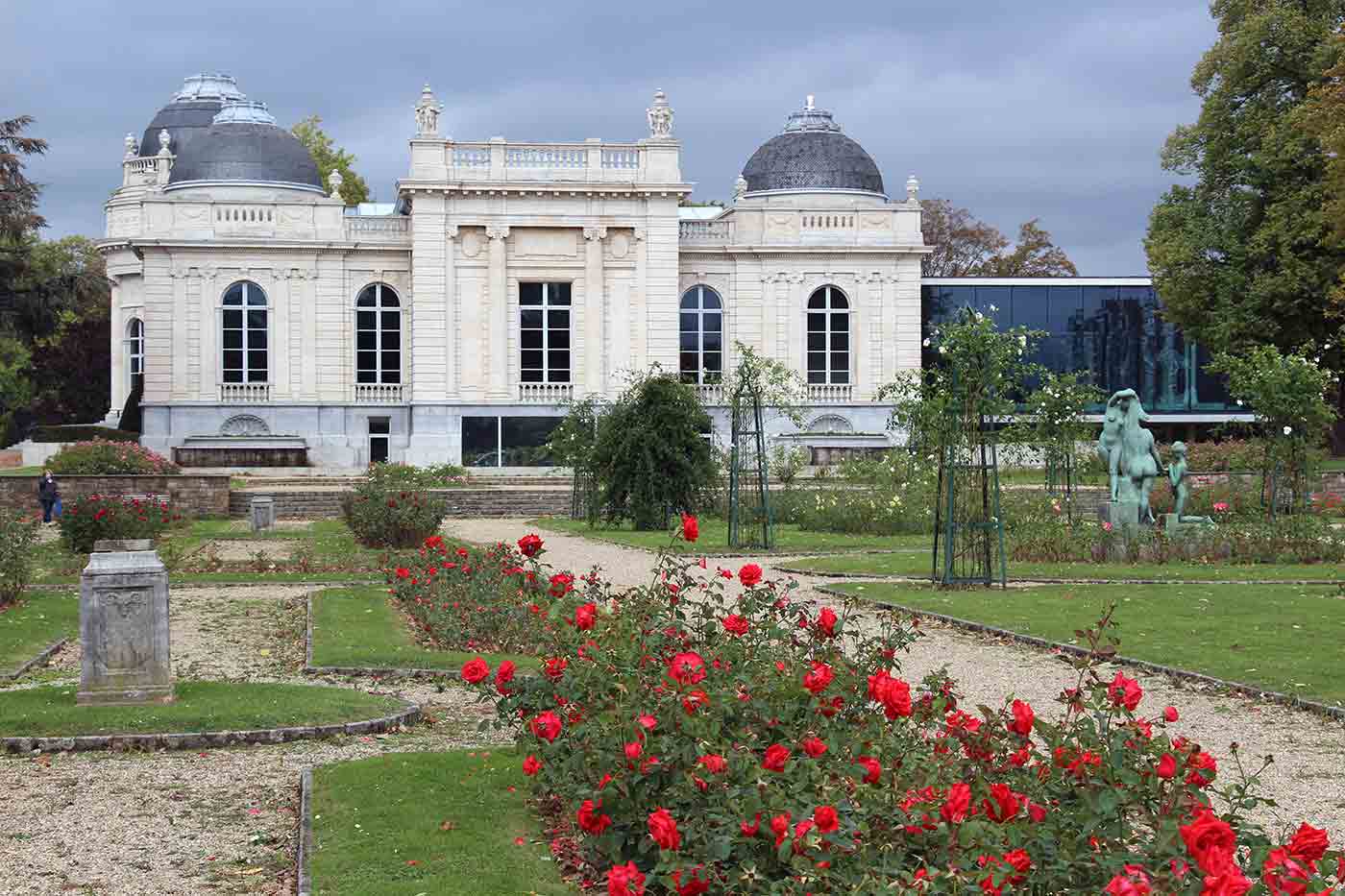
4. Aquarium-Muséum
This museum is dedicated to the world below the surface of the oceans. The museum exhibits skeletons of several sea creatures. It also gives great insight into aquatic flora and ocean geography. Though listed as a museum in Liege tourist information materials, this complex also has an aquarium that houses more than 2,500 species of marine life. You will need 2 to 3 hours to explore this place.
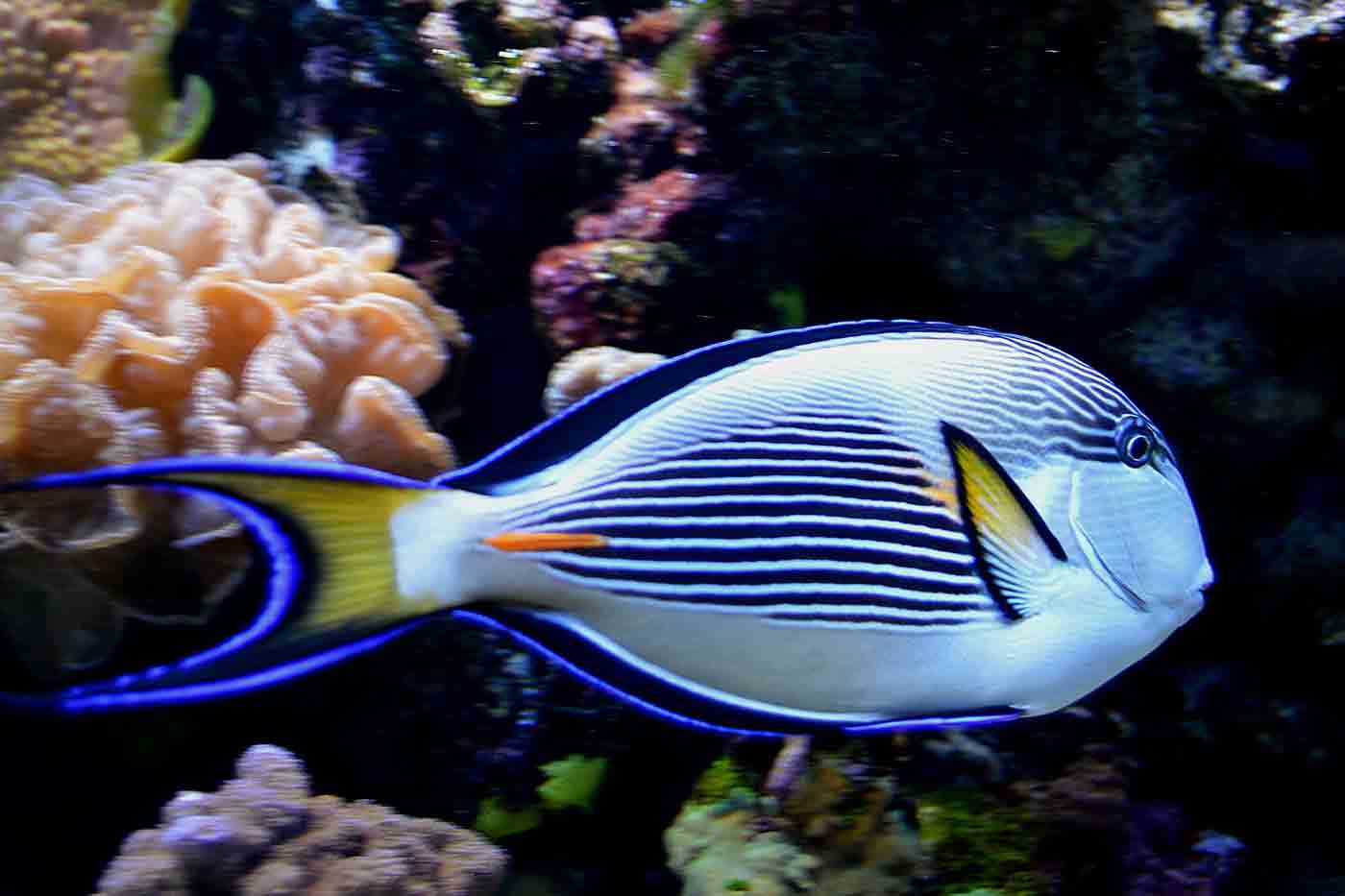
1. St James’s Church (Eglise Saint-Jacques)
This 16th-century church is renowned for its flamboyant gothic architecture. It is considered one of Belgium’s wonders and is one of the most beautiful things to see in Liege. The interior of the church features baroque sculptures, 14th-century stalls, and decorative arts from different periods. You will need about an hour to explore this church.
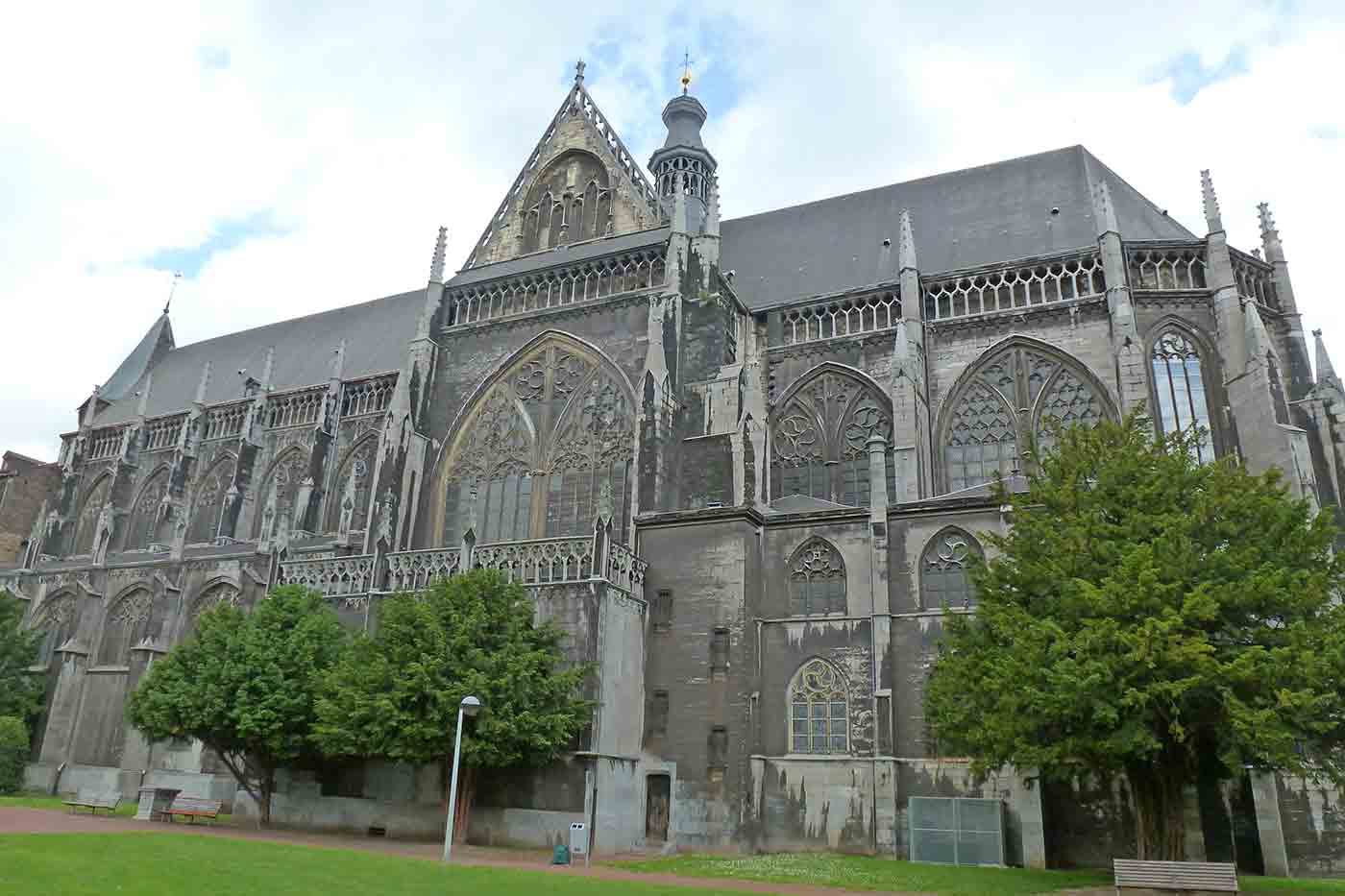
2. Trésor de Liège
This museum is dedicated to the artistic and cultural heritage of the city. You will get to see a variety of items exhibited in this museum including sculptures, textiles, manuscripts, religious artifacts, historical items and so on. It is one of the most interesting places to visit in Liege. You will need about an hour to explore this museum.
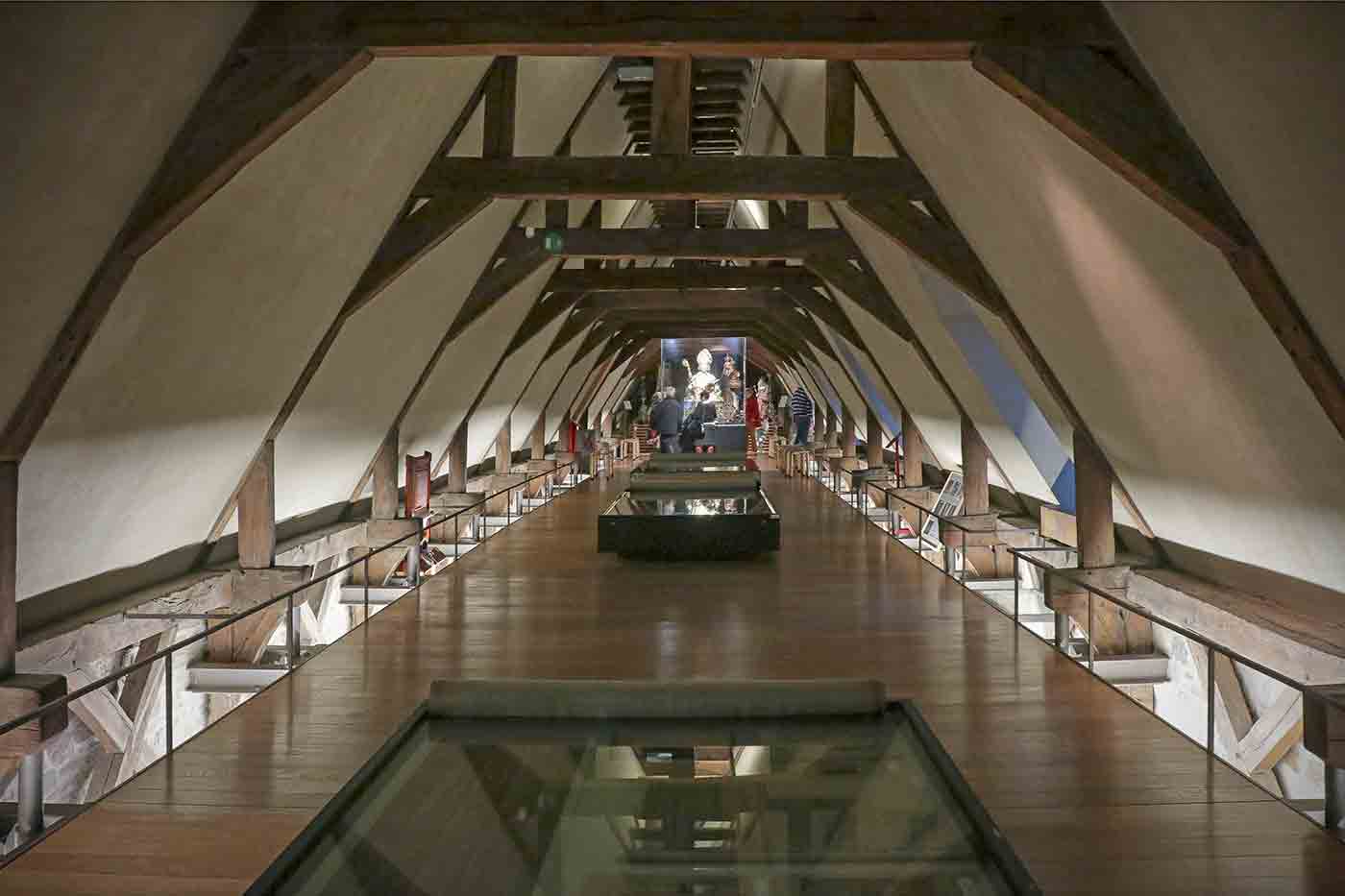
3. Liège Cathedral
Also known as the Cathedral of St. Paul, this church dates back to 1445. This church is also known for its Gothic architecture and especially for the use of mason blue limestone. It is one of the most magnificent Liege tourist attractions. You will need an hour to tour this cathedral.
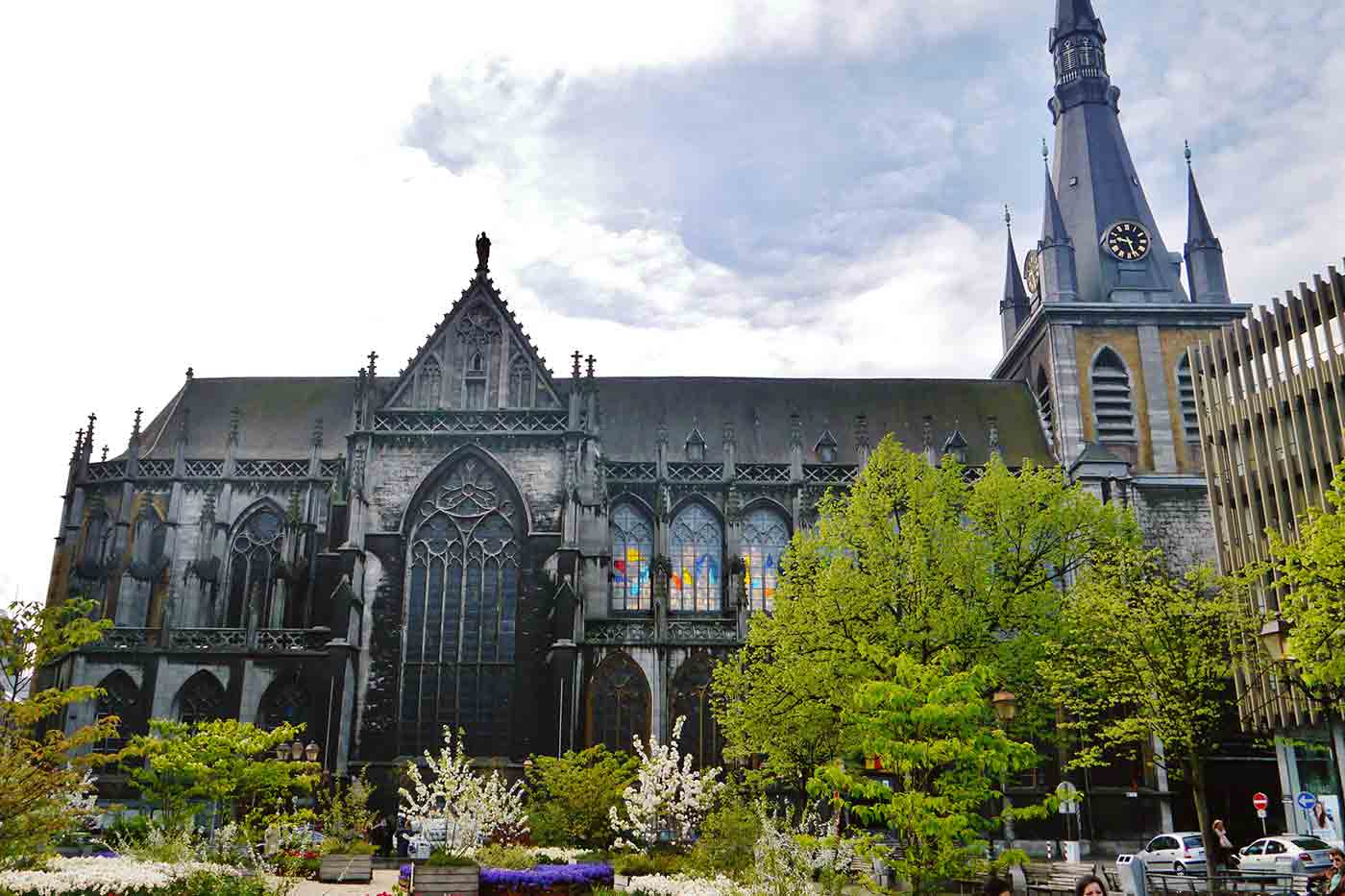
4. Archéoforum
This archeological museum covers periods from the Mesolithic age to the present day. The key exhibit of this place includes the ruins of St. Lambert’s Cathedral and the remains of a Gallo-Roman villa. You would need about an hour from Liege sightseeing for this museum.
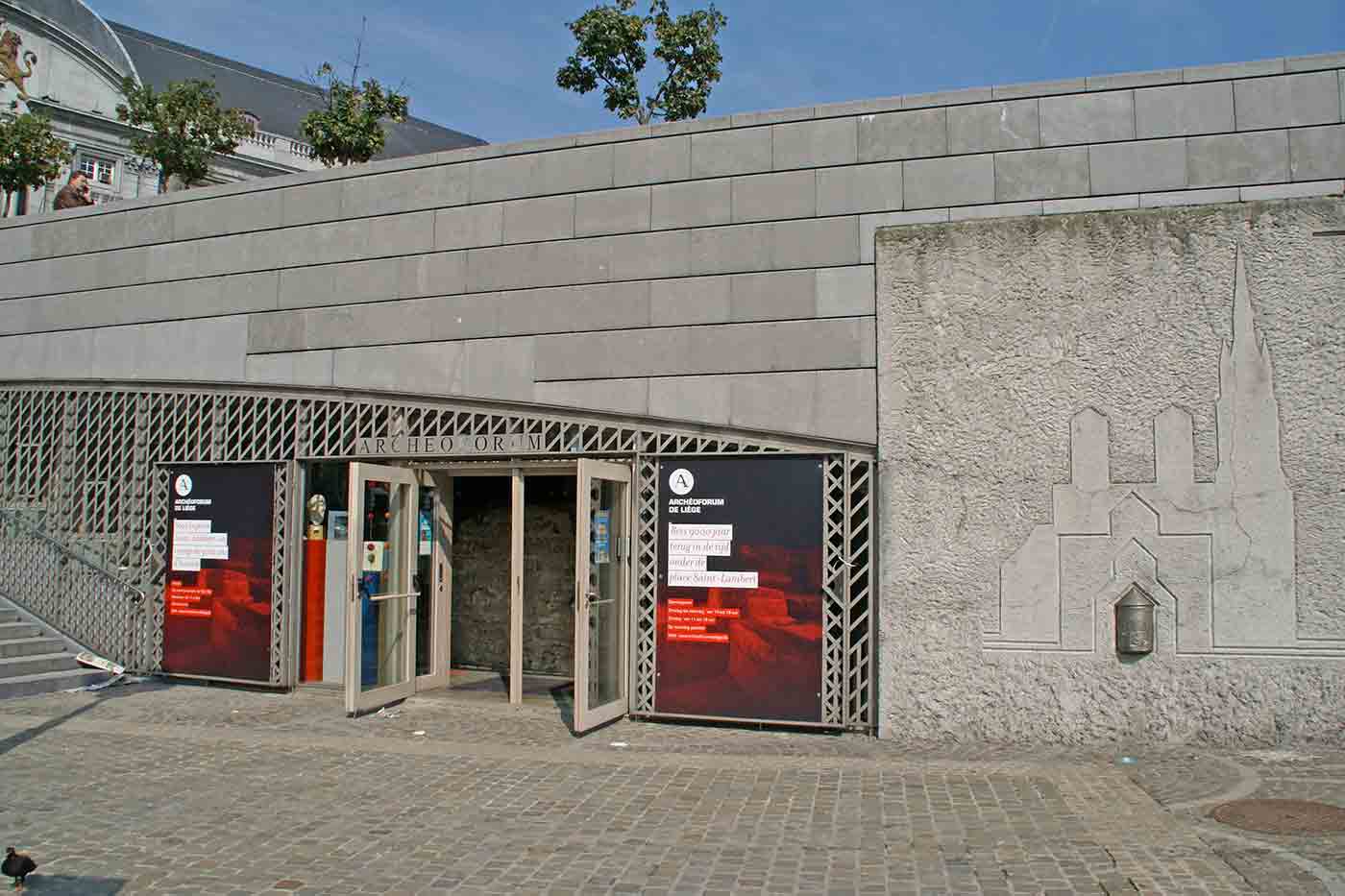
5. The Palace of the Prince Bishops (Palais des Princes-Evêques)
This palace houses the government of the province and the court of justice. The palace was built in the 16th century and exhibits a blend of renaissance and gothic styles of architecture. It is one of the biggest Liege Belgium tourist attractions. Though not all parts of this palace are accessible to the public, you will still need 30 to 45 minutes to explore it.
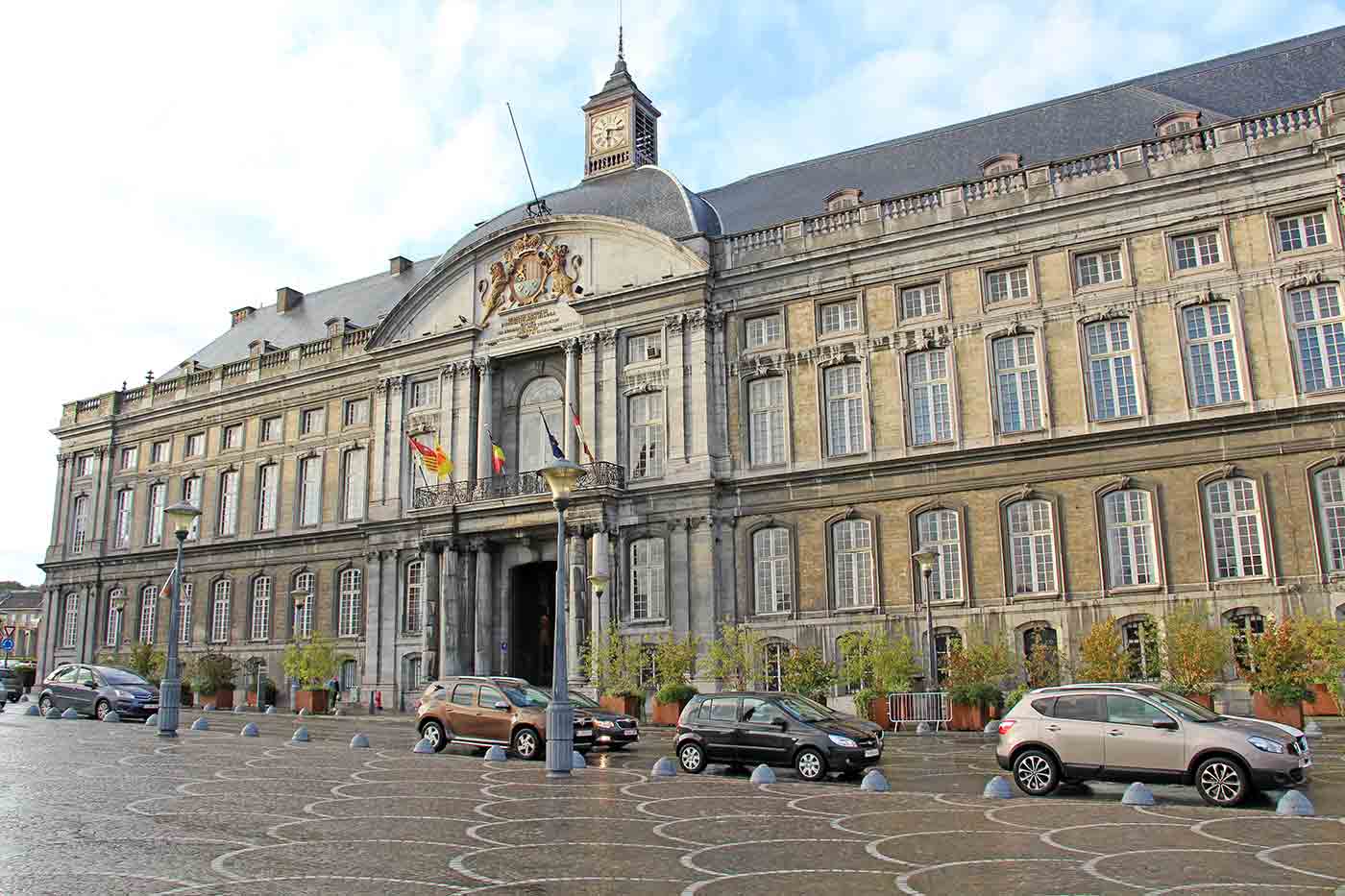

6. La Place du Marche
This historic square is considered to be the heart of the city. The square was almost destroyed during the bombings of 1691 and was rebuilt as a market square. It is surrounded by several important landmarks of the city and is also famous for the top things to do in Liege at night including shopping, dining, and drinking. You will need an hour or so for this place.
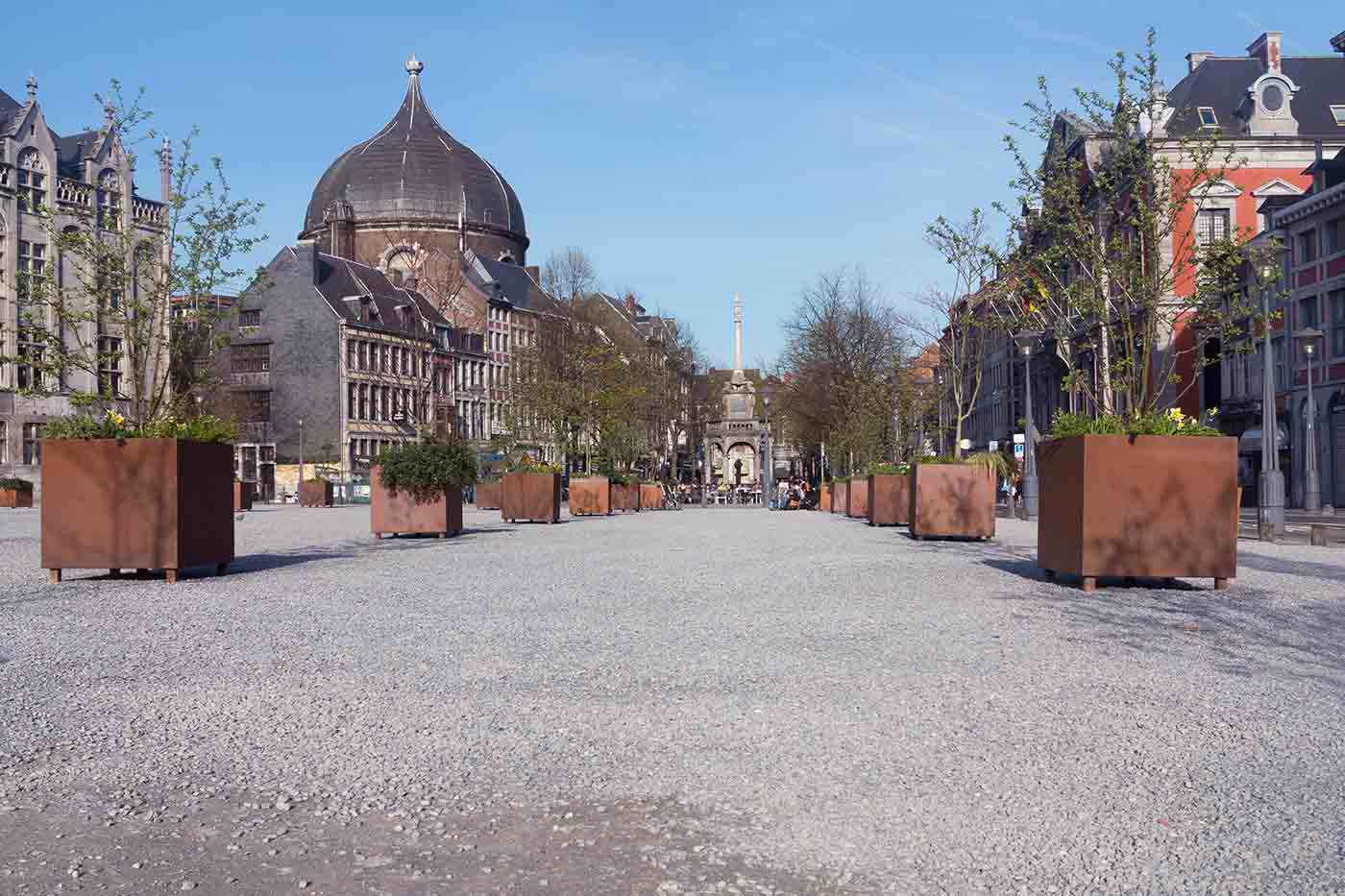
If you are looking to get more Liege tourist information, check out the sections below. We have compiled an exhaustive list of places and activities you can enjoy while exploring Liege and its surroundings.
Things to do in liege, monuments, museums & historical places to visit in liege.
- Le Grand Curtius Museum
- Aquarium Museum
- Museum of Walloon Life
- Blegny Mine
- Archeoforum
- Museum of Public Transport
- The Palace of the Prince Bishops
- St. Paul Cathedral
- Saint Bartholomew’s Church
- Fort de Loncin
- Opera Royal de Wallonie
- Sart Tilman Open Air Art Museum
- House of Science
- Tresor de Leige
- Waroux Castle
- Fort de la Charteuse
- Collegiate Church of Saint Jacques
- St. Lambert’s Cathedral
- Fort de Barchon
- Val Saint Lambert Crystal Factory
- Ansembourg Museum
- Fort de Lantin
- Fort Flamalle
- Tchantches Museum
- Citadel of Liege
- Gretry Museum
- Monument Interallie
- Museum of Regional Archeology
- Center of Walloon Contemporary Art
- MULUM – Museum of Light
- Maison de la Metallurgie & de L’indutrie
- Wittert Art Museum
- Chateau de Wegimont
- Basilique Notre Dame de Chevremont
- Holy Cross Church
- Chateau le Fy
- Fort de Boncelles
- Fort de Pontisse
- Church of Saint Denis
- Zoological Museum
- Abadia de Brailmont
- Collegiale Saint Jean en L’isle de Liege
- Eglise du Sacre Coeur de Cointe
- Phare de Liege
- Chateau Sarolea
- Museum of Bees
- The White Bison Military Museum
- Observatoire de Cointe
- Chateau Brunsode
- Basilica of Saint Martin
Nature & Wildlife Tourist Spots in Liege
- Ponds de la Juliene
- Lac de la Graviere Brock
- Trou D’Ausny
- Grotte Saint Ann
Entertainment & Leisure Tourist Spots in Liege
- Parc Boverie
- The City Mirror
- Source O Roma
- Parc d’Avroy
- Domaine Provincial de Wegimont
- Liege Botanical Garden
- Saint Leonard Park
- Fort Adventure
- Park Cointe
- Observatory World of Plants
- Parc Paysager du RyPonet
- Terril du Gosson
- Parc Hauster
- Parc de la Citadelle
- Parc de Peralta
- Parc Comhaire
Shopping in Liege
- Mercado de la Batte
- Saint Paul District
- Lemonnier Passage
- The Bat Market
- The Saint Lambert Gallery
Offbeat Places, Tours, & Adventure Activities to Do in Liege
- Walking Tours
- Bicycle Tours
- Boat Cruise
Sightseeing in Liege
- Montagne de Bueren
- Coteaux de la Citadelle
- Pont de Fragnee
- Cybernetic Light Tower
- L’ilot Saint Georges
- L’ile Robinson
- Le Plongeur et son Arc
- Statue de Georges Simenon
- Passerelle la Belle Liegeoise
- Monsin Island
- Le Faune Mordu
- Pont de Arches
Food, Dining, Restaurants, & Street Food in Liege
- Brasserie C
- Chez Nathalie
- Alla Grappa
- Le Zocco Chico
- Chez Phillipe
- Gusto Pasta Bar
- Pane e Vino
- La Roussette de Savoie
- La Valaisanne
- La Cantinetta
- La Cucinella
- La Charbonnade
- Les Sabots d’Helene
- Punto e Pasta
- Bistro n Home
- La Maison LeBlanc
Where to Stay in Liège?
Here we have listed Top Rated Luxurious, Mid-Range and Budget Hotels in Liège. You can check below listed hotels for your perfect stay in Liège.
Luxurious Hotels
- Hotel Neuvice
- Van der Valk Hotel Liege Congres
- Mercure Liege City Centre
- Maison Noppius
- Van der Valk Selys Liege
- No. 5 Bed & Breakfast
- Globales Post Hotel & Wellness
- Verone Rooms & Suites
- B&B Villa Thibault
- Faubourg Saint Martin
Mid-Range Hotels
- Hotel de la Couronne
- Pentahotel Liege
- Amosa Liege City Centre Hotel
- Radisson Liege City Centre
- ibis Liege Centre Opera
- Univers Hotel & Brasserie
- Hotel Les Acteurs
- De Eifelhoeve
- Le Cygne d’Argent
- Le Venitien
Budget Hotels
- ibis Styles Liege Guillemins
- Leonard Room
- Studio Filo
- Le Campanile
- Premiere Classe Hotel Liege
- Hotel Campanile Liege Luik
Custom Tours Package in Liège
How to reach liege.
Liege airport is the best option to get to the city. It is only 10 kms outside the city. You can get direct flights for Liege travel from Atlanta , Milan , Moscow , Shanghai , Hangzhou, Chicago , Nairobi , New York City , Jinan, Tel Aviv, Mexico City , Oslo , Toronto , Hong Kong, Lagos, Miami , Reykjavik , Doha, Houston , Los Angeles and many more.
You can get buses and cabs from the airport to get to places to visit in Liege. Other airports close to the city are Brussels , Maastricht -Aachen, and Cologne-Bonn.
You can visit Liege by train from several cities in Europe such as Paris , Brussels, Cologne , Frankfurt , Aachen and so on. If you are looking to catch a bus, you can find Liege on Eurolines route. There are several direct and connecting buses which will help you reach Liege from several cities in Belgium and nearby countries.
If you are planning to get to Liege by road, you should pick between routes E25, E42, E40, E313 or E25.
You can reach Liege by boat from Maastricht. These boats run occasionally and are usually organized as tours for Liege sightseeing. So you have to check the schedule if you wish to be aboard for this experience.
Image Reference
- Museum of Walloon Life – Promeneuse7 / Wikimedia Commons
- Coteaux de la Citadelle – Promeneuse7 / Wikimedia Commons
- Montagne de Bueren – Stephane Mignon / Flickr
- Saint Bartholomew’s Church – Jean-Pol GRANDMONT / Wikimedia Commons
- Le Grand Curtius Museum – Trougnouf (Benoit Brummer) / Wikimedia Commans
- Liège-Guillemins Railway Station – Rick Ligthelm / Flickr
- La Boverie – José Bollen / Flickr
- Boverie Park (Parc de la Boverie) – Fred Romero / Flickr
- Aquarium-Muséum – Allan Watt / Flickr
- St James’s Church (Eglise Saint-Jacques) – Promeneuse7 / Wikimedia Commons
- Trésor de Liège – Kotomi_ / Flickr
- Liège Cathedral – Zairon / Wikimedia Commons
- Archéoforum – flamenc / Wikimedia Commons
- The Palace of the Prince Bishops (Palais des Princes-Evêques) – Fred Romero / Flickr
- La Place du Marche – Michielverbeek / Wikimedia Commons
- 18 Spectacular Places to Visit and Things to Do in Sintra
- Famous Tourist Attractions to Visit and Things to Do in Alajuela
Mustafa Natalwala
Mustafa is a content writer and digital marketing expert at WideWorldTrips.com His mainly interests are into travelling, photography, film-making
You May Also Like
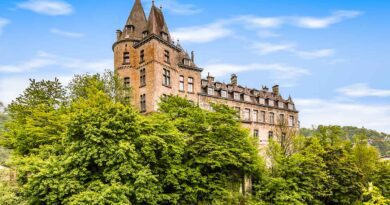
17 Must-Visit Tourist Attractions and Things to Do in Durbuy, Belgium
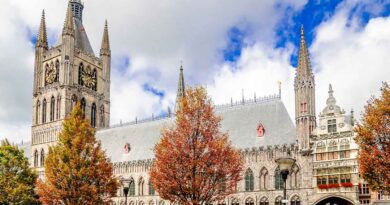
14 Wonderful Tourist Attractions to See and Things to Do in Ypres (Ieper), Belgium
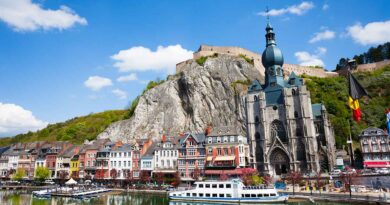
17 Astonishing Places to Visit and Things to Do in Dinant, Belgium
Leave a reply cancel reply.
Your email address will not be published. Required fields are marked *
Save my name, email, and website in this browser for the next time I comment.
- Remember me Not recommended on shared computers
Forgot your password?
- The Western Front
Liege Forts
- Worth visiting?
By jscott 9 March , 2014 in The Western Front
Recommended Posts

I will be in Liege in April for a bike race, and have a spare day. I am keen to visit the Liege forts and was wondering if anyone has visited these and could suggest which of the forts they would recommend?
Alternatively, are there other WW1 sites near Liege that are worth a visit?
Many thanks, Jonathan
Link to comment
Share on other sites.
There are several you can visit but the most impressive are the ruins of Loncin

Simon Jones
This will give you a useful summary.

Loncin is definitely the most impressive and best preserved, even though it is destroyed!
Note the British who are listed on the memorial there.
The museum is worth a long visit. I would be grateful if you could give the name of the breed of dog which pulled the machinguns (it came up on a forum many years ago, and I can't remember it and haven't been for years).
There are at least two others which are open at various times, but only Loncin is open pretty much all the time (or was).
Thanks all, much appreciated. And I will let you know re the dogs!
Cheers, Jonathan
Hello, try this site
http://www.fortdeloncin.com/
There are English audio guides in the fort.
The dogs were 'Matin Belge'
hope this helps

This has nothing to do with Liège but only the dogs. As the Fourth Mixed Brigade marched its 18 km north to engage in the battle of Halen the dogs of the Maxim became worn out in the heat. They have to be left at farms and soldiers had to pull the machine gun carts the rest of the way.

lostinspace
Loncin is definitely worth a visit, I was lucky enough to be given a tour by one of the english speaking guides there (in May, 2011), the tour took about two and a half hours and was very informative - one of the highlights (?) being the re-creation of the explosion made as the 42 cm. shell penetrated the fort in August 1914. The monument to the Belgian dead, some of which remain entombed under fallen concrete, is also quite impressive. If you have the time you might want to go on to Fort de Lantin which is the next fort to the east (a short distance away from Loncin), it was only lightly damaged and gives you a better idea of how the forts were designed (if I remember correctly the tour there was self-guided).
Have a good trip,
Dave thanks very much - that is very helpful. Sounds like Loncin is the highlight - and I will try to also get to Lantin if I have time.
Thanks, Jonathan
Create an account or sign in to comment
You need to be a member in order to leave a comment
Create an account
Sign up for a new account in our community. It's easy!
Already have an account? Sign in here.
- Existing user? Sign In
- Forum Rules
- Long Long Trail
- Make a Donation
- Online Users
- Create New...
- Facebook en-gb
- Twitter en-gb
- Youtube en-gb
- Instagram en-gb
- Linkedin en-gb
- Nature in Wallonia
- Wallonia: Land of Water
- Surprising Wallonia
- Walks and hikes
- Food and drink
- Cycling holidays
- Sports activities
- Heritage and culture
- Sustainable holidays
- With a loved one
- Travelling with reduced mobility
- Holidaying with my dog
- Staying in Wallonia
- Motorhomes & vanlife
- Bed & Breakfast
- Youth hostels and gîtes in Wallonia
- Holiday Parks
- Eco-labelled accommodation
- Reduction vouchers
- Museums and attractions
- Events calendar
- Flea markets
- Visit'Entreprise
- Walloon towns and cities
- City guides
- Villages of Wallonia
- The Belgian Ardennes
- Touristic information
- VISITWallonia info.shop
- Before you leave
- VISITWallonia be pass
- Barchon Fort | Liège
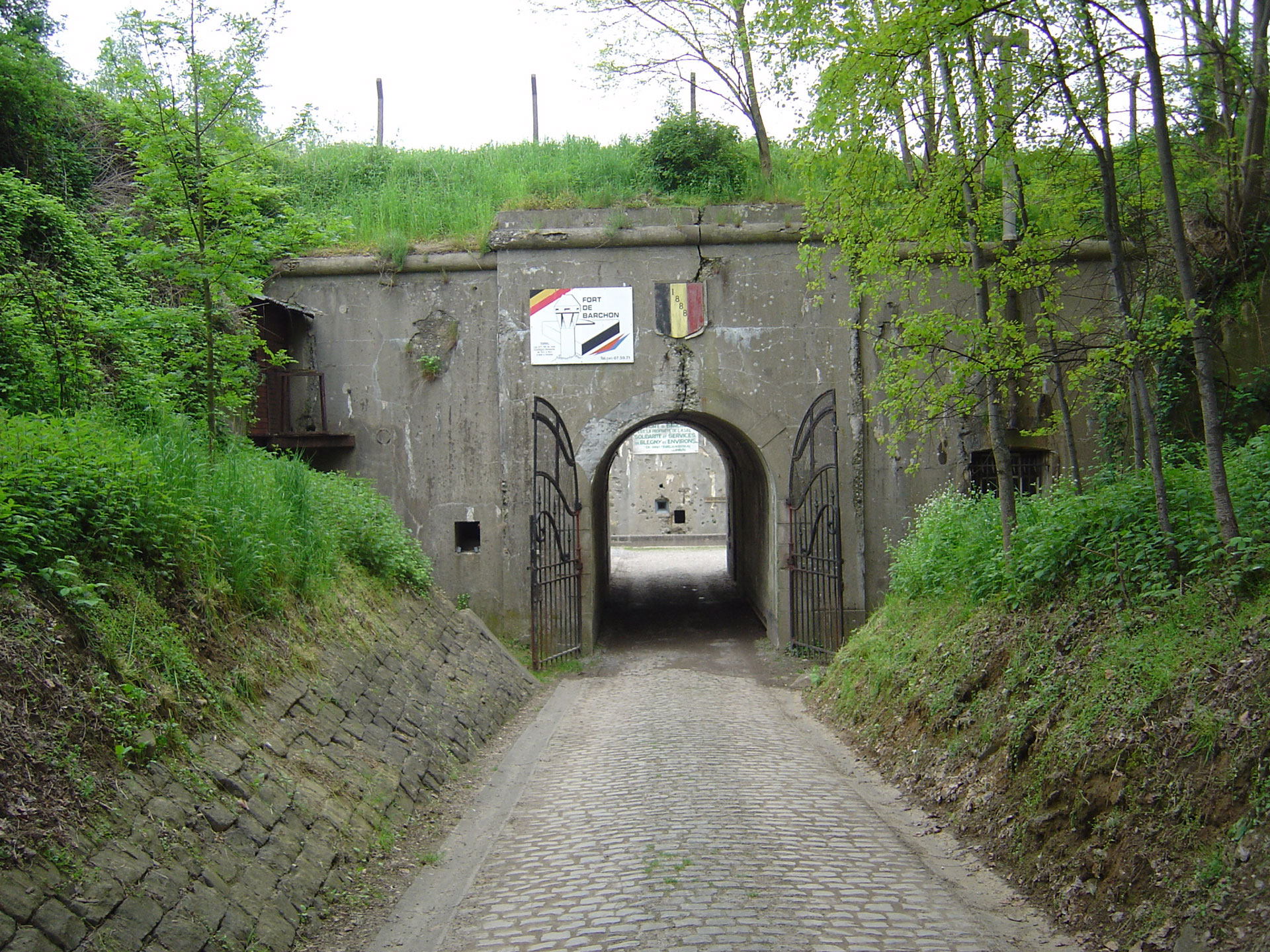
VISITWallonia.be Pass
Enjoy Wallonia for less with our selection of special offers.

Wallonia, Destination Nature
#VISITWallonia
Please accept marketing-cookies to watch this video.
Share your best memories of Wallonia by tagging us on social media

3 days of itinerary in the Liège Province of Belgium
October 31, 2023 | Posted in: Belgium
I'm always up for exploring a bit more of my home country Belgium but being the workaholic that I am, I often need a kick in the behind to do so. This time, that kick came from the Province of Liège. They've put together a list of unusual things to do, places to stay at and places to eat at in the province and asked me if I wanted to come discover some of them.
I put together my own itinerary for three days of unique things to do in Liège and opted for a mix of outdoor, cultural, and culinary activities. Check them out below.
Where to eat lunch in Liège Province?
What is noufy rock hike, where to have dinner at liege province, where to overnight in liege provice, what should visitors know before visiting the caves of remouchamps, where to lunch in caves of remouchamps, what is parcours le cimetière de verviers, what are the tips for visiting signal de botrange, where to sleep and dine in liege province on day 2 , where to have lunch near val saint-lambert, what are the tips to visit préhistomuseum, how to get around liège province, day 1: hike to the leroux tower vantage point.
The Leroux Tower is a 16m 65 cm high vantage point in the town of Trois-Ponts, overlooking the Salm Valley and many points of interest in the area, such as the upper lakes of the Coo-Trois-Ponts hydroelectric power plant, the town of Coo, the small villages of Brume, Mont-de-Fosse, Bergeval, Saint-Jacques and, on a clear day, the Baraque de Fraiture in the neighboring province of Luxembourg.
To get there, you can do a 6-km round hike that starts right by the town's train station, where you can park for free. This map gives you a good idea of the route but note that I did the walk in the other direction, so that's how I'll share it with you.
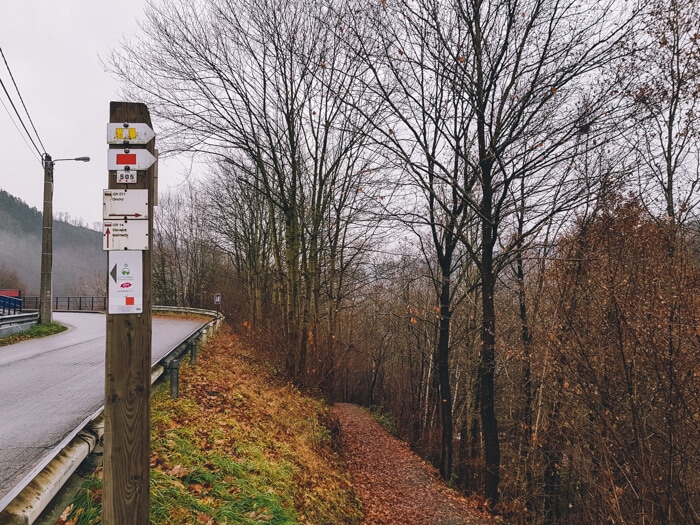
When you're facing the train station, walk right toward the bridge going over the railway. It's about 200 meters. To the right of where the bridge starts, the trail starts as well and takes you down toward the river Salme. There's a pole with trail markers. Follow the horizontal red rectangle.
After a bit of walking, you'll reach a point where the path goes straight but there's also a metal bridge to your right. I didn't find the signage clear here, but you'll want to keep walking straight. What follows, is the only part of the hike where the trail is very narrow – just wide enough for one person – and there's a bit of a drop next to you as you ascend and descend while walking along the river.
The trail remains the same for quite a while but you have some points of recognition. First, you'll pass a rather large camping ground to your right. Then, you'll walk underneath a railway bridge.
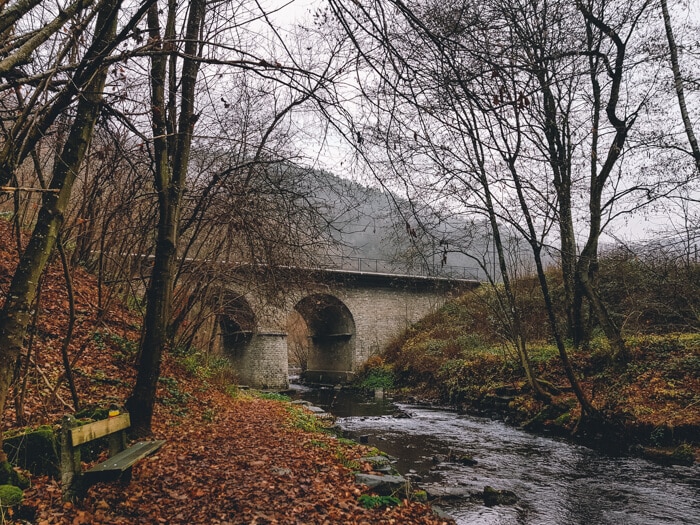
When you reach a big road, there are sign poles again and you'll need to turn left to go up the hill. In hunting season (October – December) this is also where they put up a list of dates when people will be hunting. On those dates, it's forbidden to do the hike so if you're planning to go in fall, it's probably best to call the tourism office (+32 (0) 80 68 40 45 ) ahead of time to check there's no hunting planned that day.
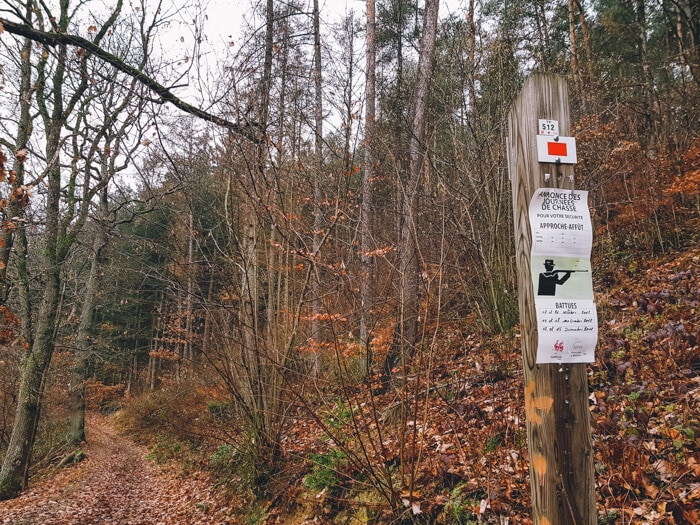
The path widens now. It's half-hard and rather easy to walk except that it ascends quite a bit. Now, when I was researching this hike beforehand, many people said it was a heavy hike because of the elevation but I thought it was okay. Yes, this part of the hike goes up the entire time until you reach the plateau at the top, but it's not like hiking in the Austrian mountains .
If you're moderately fit, you'll be alright. Just go slow and stop for a breather if you need one.
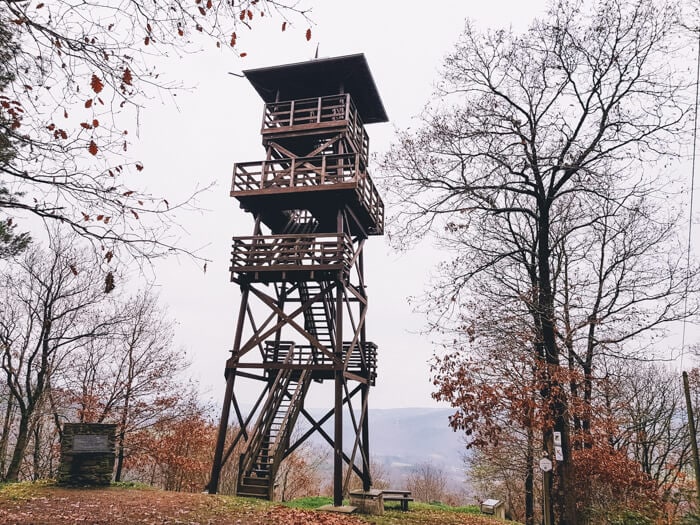
At the top of this trail, you'll reach a plateau where you'll cross through a forest before turning left. It's just a minute or two now before you get to the Leroux Tower.
The current tower was built in 2000 but the original one dates back to 1938 and was named after the woodworker who had supplied the wood for the tower. It became a symbol of hope when on July 21, 1944, during World War II, a group of Belgian resistance fighters planted a Belgian flag on top of the tower. At that time, the area was still occupied by the Germans.
Between this tower and the first, there was another that had to be broken down in the late 1990s because the wood had gotten bad.
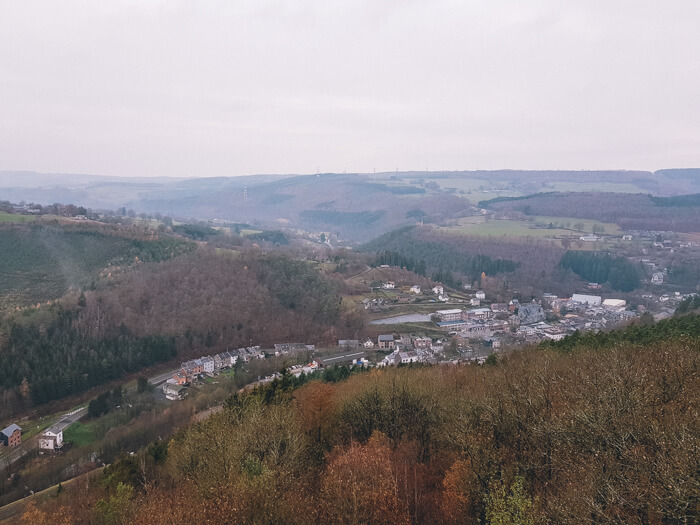
Because of my fear of heights, it was a little scary to climb the tower but not as much as I'd thought beforehand. The only part I found to be a bit scary was climbing the steps to the first two levels as they're “see-through”: you can look down between two steps.
At the top deck, there's a little bench to sit and admire the view or you can also make use of the picnic table back down if you want to take a little break before heading back.
The walk back goes along an easy to follow forest trail. Just watch your steps as it's still a forest trail and so the ground isn't entirely flat.
The red rectangles keep showing you where to go but it's good to know that at one point, my feeling told me to follow a path going left and down to the town while I did, in fact, need to keep following the signs. They took me left and down a bit further so maybe that path I wanted to take would have worked as well but it wasn't part of the route.
The forest trail ends by a big road that you have to follow down (left) until you reach the train station again. This part takes about 8 minutes.
When it's been dry for long, you might be fine wearing sneakers, but I do recommend hiking shoes for this hike as the trail was rather muddy at times and get be quite uneven as well. I have the Salomon QUEST 4D 3 GTX® W boots which are great.
If you don't have a lot of time and still want to see the tower, you can park somewhere along the Route de Wanne and walk into the forest to reach it in a few minutes. I haven't tried this, though.
After that hike, you've deserved a good lunch! Hostellerie Beau Site is a hotel with a restaurant and patio that overlook the valley. It's possible to have lunch or dinner here when you're not a guest at the hotel but you do need to reserve beforehand.
I enjoyed a refined three-course lunch here consisting of:
- a goat cheese, apple and pear salad as a starter
- a game dish as the main course
- a special kind of cake with ice cream for dessert
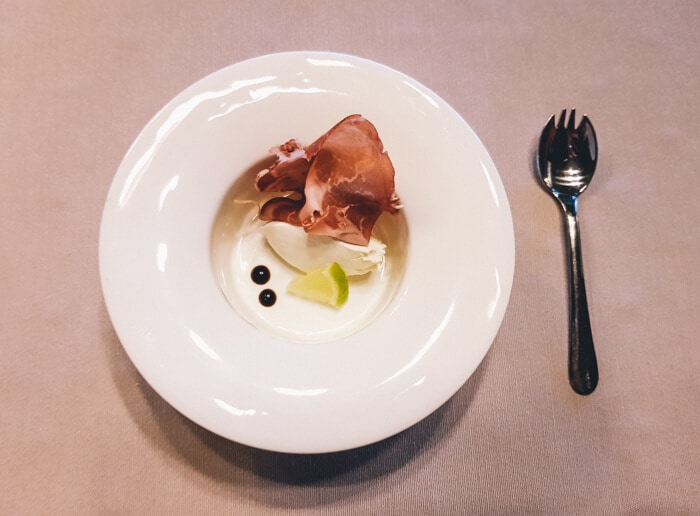
The guy who runs the place was lovely to chat with too. Hostellerie Beau Site is located in Rue des Villas 45, Trois-Ponts.
The Pierre Noufy or Noufy Rock is one of the most isolated rocks in the country… and it comes with a legend. A golden ring is constantly growing inside the stone. But that's not all, according to local tales. The Noufy Stone is said to bring fertility to women who touch it and in the past, witches held their covens here.
It shouldn't come as a surprise that such a unique stone isn't easy to get to. In fact, it doesn't even lie on a hiking trail but tucked away in the woods. Luckily for us, brave explorers who've come before us have cleared a little path and you can now reach it by venturing off a trail that starts in the town of Les Villettes (Lierneux).
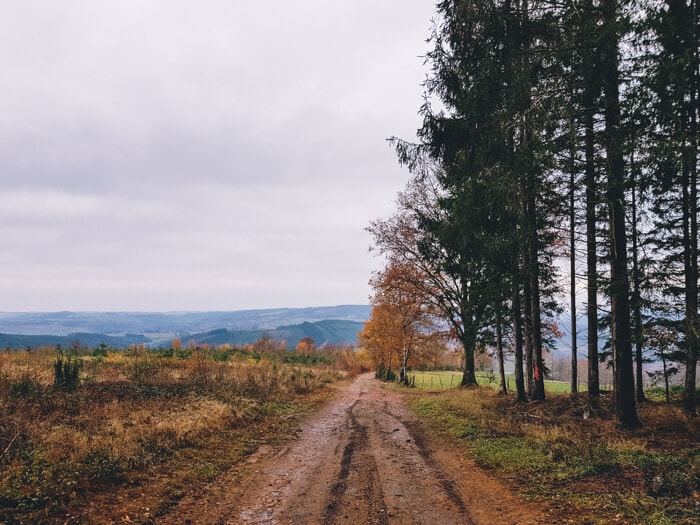
Now, the center of Les Villettes is small and there's no real parking ground for those who come by car to do the hike. I parked on some grass by a picnic table in the street called La Sevraille and I'd say that's probably your best bet too as you'll need to hike up La Sevraille to where the forest and the hike start.
The road goes up steeply but after that, it's pretty much a flat hike until you go down again.
The sign you need to follow for the 5.5 km hike I did, is the upright blue rectangle. If you have more time, there's also a 14 km hike you can do that passes by the Pierre Noufy. For that one, you need to follow the horizontal yellow rectangle.
I have to honestly say that I hadn't expected much from this hike. I thought I'd just go in search of a rock in forest that, it being the end of November, would be rather leaveless.
Boy, was I in for a surprise!
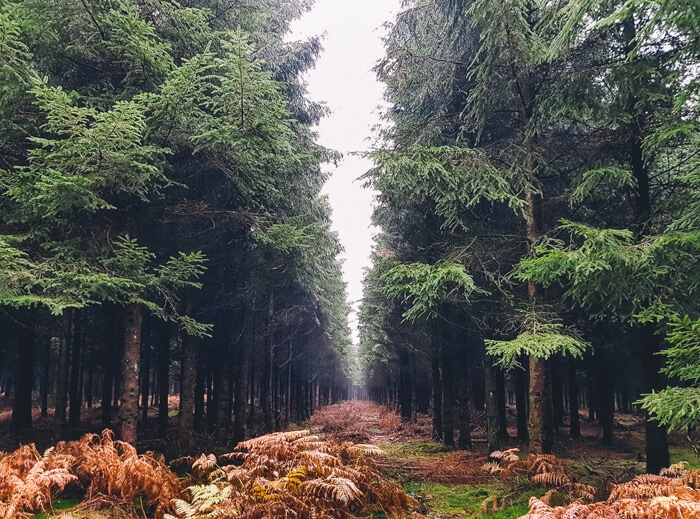
The woods in which you can find the Noufy Stone consists of lush green pine trees. The soil was covered in bright green moss and bracken turned a warm orange. I tried endlessly to capture it on camera but I still feel the photos don't convey how otherworldly this place looked.
The walk was easy and straightforward. When La Sevraille reached the forest, you keep going straight over the wide forest road until you reach a big crossroads where the signs tell you to go left. Here you just keep following the road again. After a while, it becomes narrower as you go more into the forest.
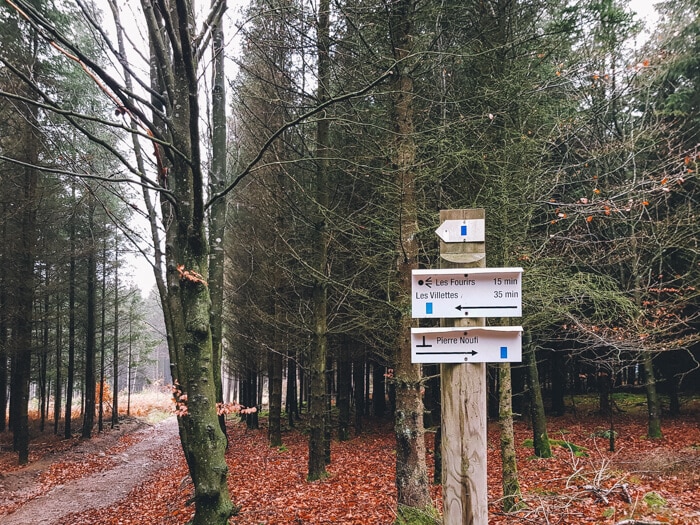
I was worried I'd missed the sign that indicated where to go look for the Noufy Stone but I just hadn't gone far enough. You really can't miss it. It's at a crossroads where the path you're on keeps going straight but there's also a trail going to the right.
You'll have to leave your route for just a few meters to go right and then there will be another sign indicating where the Pierre Noufy is. It might not be super clear in summer but now I could spot it in between the trees.
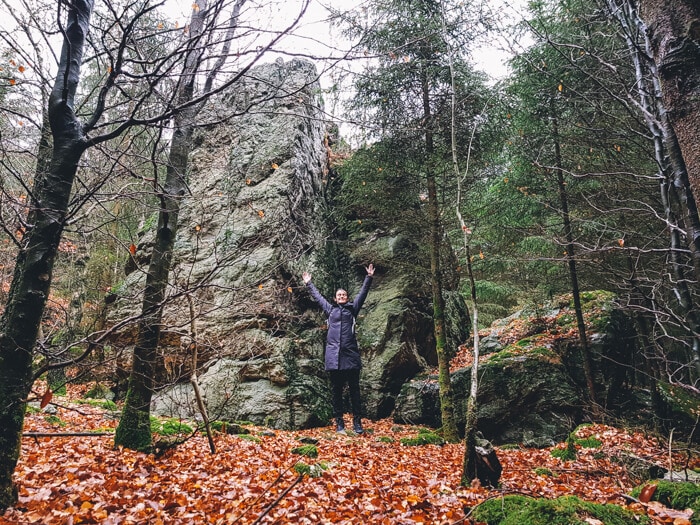
Again, expecting just a big rock in the forest, I was surprised by the vibe at this spot. Maybe it was because I was all alone there and the woods were super quiet. Maybe it was because of the small rocks covered in moss and mushrooms surrounding the Pierre Noufy, but this place felt special. Maybe not golden-ring-in-a-rock special but definitely witch-covens special.
You can walk all around the rock but I didn't. I only made it halfway. When an unexplainable feeling tells you to stop, you stop, right?
Don't believe me? You'll just have to go look for the Noufy Stone yourself. When you do, come back here and tell me if it also left an impression on you.
Happy that I'd found it, I returned to the main trail which now led me straight back down to Les Villettes, offering an amazing view along the way.
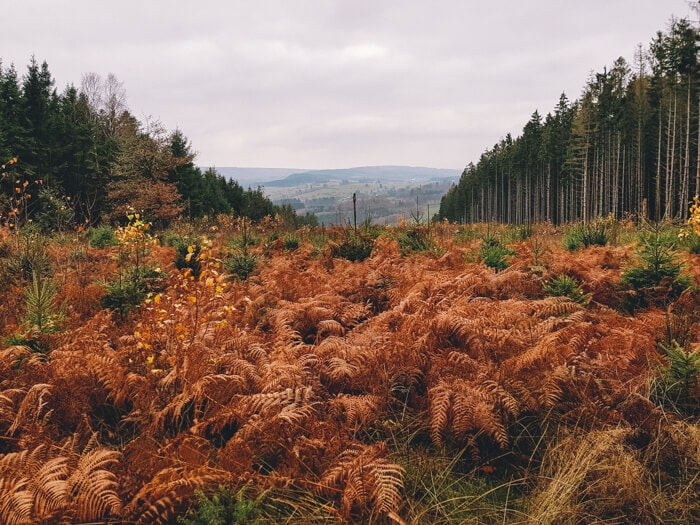
I also spotted what could potentially be my dream house. It was the first house, I believe, I saw after leaving the forest and it was built on a slope overlooking the valley. On the side of the trail, it was just bricks but I could tell that on the garden side overlook the valley, it was all windows.
On top of that, it had an apple tree (I've always said I want an apple tree in my garden later) and blueberry bushes!
La Maison de Maître is a luxury boutique hotel with an on-site restaurant and that's where I went for dinner. The website says there's the option of eating à la carte with a selection of each time four options for the starter, main course, and dessert, but when I was there, it was a fixed menu. Perhaps because of it being low season.
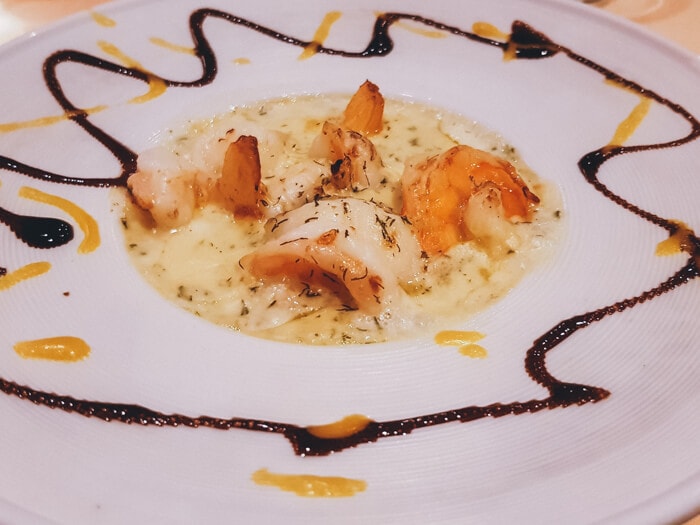
I ended up having shrimp in a creamy dill sauce, porc with lots of vegetables and some kind of fried potato mash and three heavenly scoops of caramal mousse
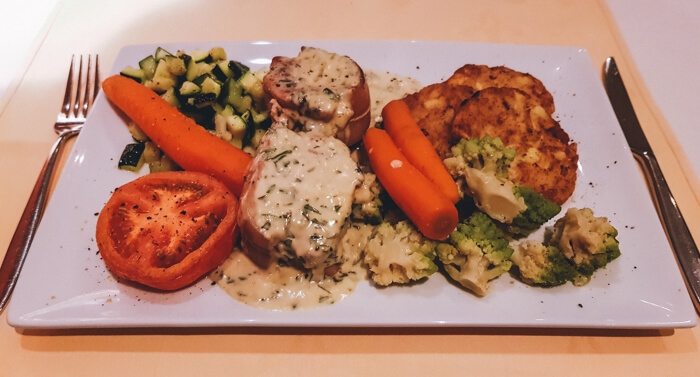
I really like the starter and the dessert but I'm not a big fan of porc or greasy things so I was a little less fond of the main. That's just personal taste, though, as there was nothing wrong with the way it was prepared.
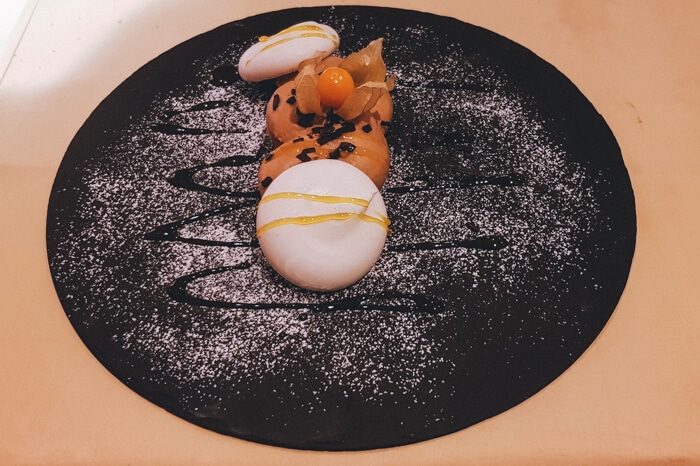
The lady serving me was super friendly and made sure I had everything I needed.
There's a large parking lot behind the hotel and it's necessary to reserve beforehand if you're not a guest and want to have dinner here. La Maison de Maître is located in Les Marottes 37-39, Arbrefontaine (Lierneux).
So why didn't I spent the night at La Maison de Maître as well? I'm sure it would have been wonderful, but while researching this trip I'd come across something even more unique: Le Bois Brûlé, a beautiful cabin on a dead-end road with three double rooms and a communal space which can be booked per room or in its entirety.
WiFi is present but instead of a television, you get surrounding windows offering you a view of the woods and the stars. The owner Annelore told me there are deer there too. Unfortunately, I didn't spot any.
Also a plus for me: the ergonomic pillow on the bed.
Aside from this cabin, there's also a second cabin which acts as a big living room and second kitchen. It's ideal for a group of friends or a family that wants a bit more space to hang out and cook together.
Breakfast is served in Annelore's living room and consists of homemade spelt bread, white bread made by a lady living nearby, homemade jams, honey, cheese and yogurt from a local organic farmer, and a crunchy granola with fresh fruit. The coffee served is made from freshly ground coffee beans and there's tea as well.
There are various hiking routes that start near Le Bois Brûlé and Annelore gladly provides you with all the information you need as well as with laminated route maps that you can use. Le Bois Brûlé is located in Derrière les Thiers 3a, Trou de Bra (Lierneux).
Day 2: Visiting the Caves of Remouchamps
The Caves of Remouchamps are one of the larger attractions in the area. They were discovered in 1828 and have been open to the public since 1912. You can only visit them on a guided tour and tours run throughout the day. How often depends on how busy it is.
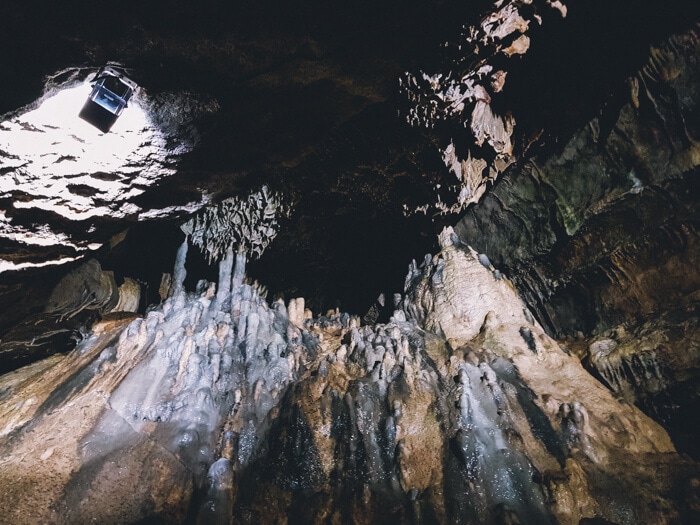
As I visited during the last week of the season (the caves are closed in December and January), it was calm and I had guide Milton all to myself. He was an interesting character on his own, a rastaman originally from Suriname wearing a big golden chain to complete his uniform and happy to pose for a photo.
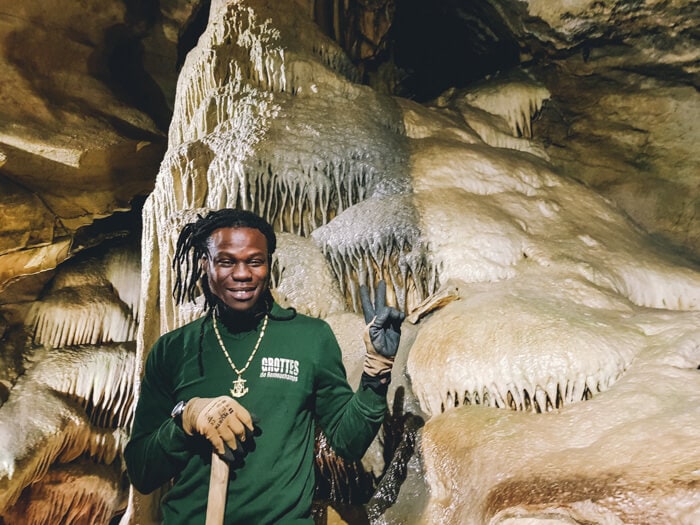
The first part of the tour consists of a 1,200-meter walk through the halls and galleries of the cave. You'll stand in a room that was carved out by the Rubicon river 1 million years ago. Given how high it is, you'll probably wonder how that little river, that now just runs a meter deep inside the caves, was ever able to have such an effect.
Actually, there's only one room in the cave that wasn't formed by the river and that's the room called The Cathedral. It was created when part of the cave collapsed some 700 years ago.
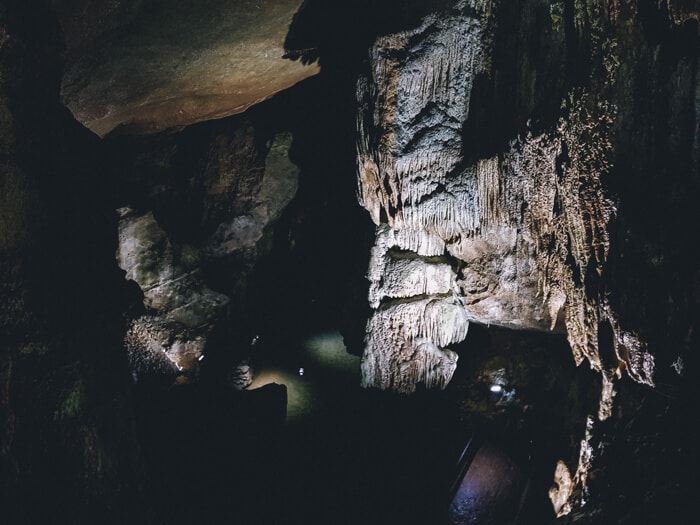
You'll also be told about the bats that live in the cave and will see 7-meter chalkstone that's 700,000 years old. Apparently, a stone like this only grows 2 to 3 cm³ per century . Crazy, right?
It's able to grow because of rainwater that seeps in through the cracks at the top of the cave. If the chalk still looks wet and whitish, it's a stone that's still growing. If it's dry and brown, it's “dead”. A chalk stone dies when the cracks that provide it with rainwater close. That means it can also come back to life. All it needs is a new crack where water can seep through.
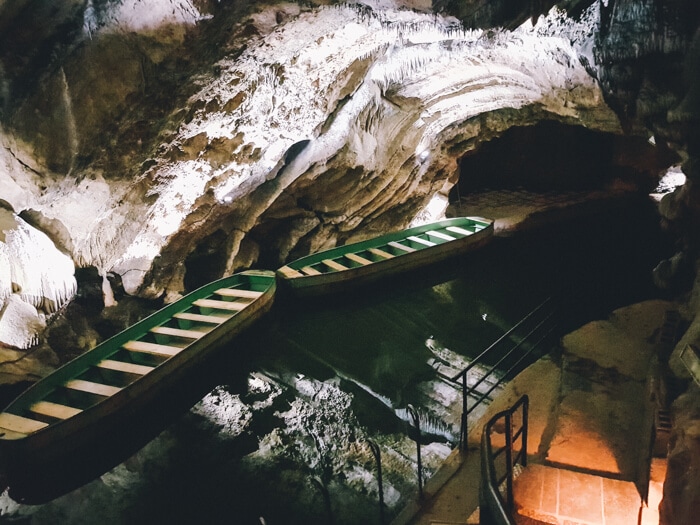
Speaking of water: you don't make your way back to the entrance walking. Nope, you' go by boat! The Caves of Remouchamps have the longest cave boat ride in Europe. It's about 700 meters long and requires quite a bit of strength from the guides as they use a wooden pole to push the boats forward – and these can contain up to 22 people!
At the end of the ride, you pass through a narrow tunnel and this is the only part of the route that was man-made. Every other hall and gallery you go through was carved out by nature but the tunnel was a 40-cm crack they opened up with explosives to allow boats to get through.
It used to be known as “the kissing tunnel” because until a few years ago, the tunnel was entirely dark and so the guides would hear couples kissing but they wouldn't see them.
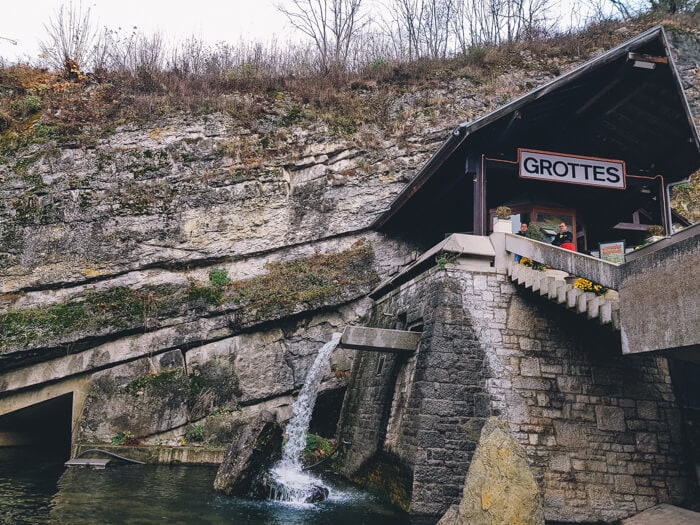
Listed below are the tips for visiting the Caves of Remouchamps.
- Rain is heavy. When it rains very heavily, it's impossible to do the boat rides as that level of the caves becomes flooded and a 30-meter high waterfall splashes down on it.
- The passageways are rather narrow. Some of the passageways are rather narrow and you'll have to take a total of 400 steps during your visit, but there is a shorter route for people with limited mobility.
- No dogs or pets allowed. It's not allowed to bring dogs on the tour.
- Constant temperature. The caves have a constant temperature of about 12 degrees Celcius, so dress accordingly.
To make a full day out of it, you can combine the caves with a visit to the Monde Sauvage Safari Parc, located nearby.
Part of the Van der Valk chain, the Van der Valk Verviers is unique because of its location in a former train station. It has a spacious bistro and restaurant and with a large parking in front, it's an easy place to stop for lunch.
I had a traditional Liège meatball which came with fries, a small salad, and some apple mousse. Yum! If you don't know about Liège meatballs, check out my post on typical Belgian foods .
I had lunch in Verviers because of my next activity: a walk at the city's cemetery. Now, I can hear you thinking: why on earth would I want to visit a cemetery?! Well, people visit Père Lachaise in Paris as well, don't they?
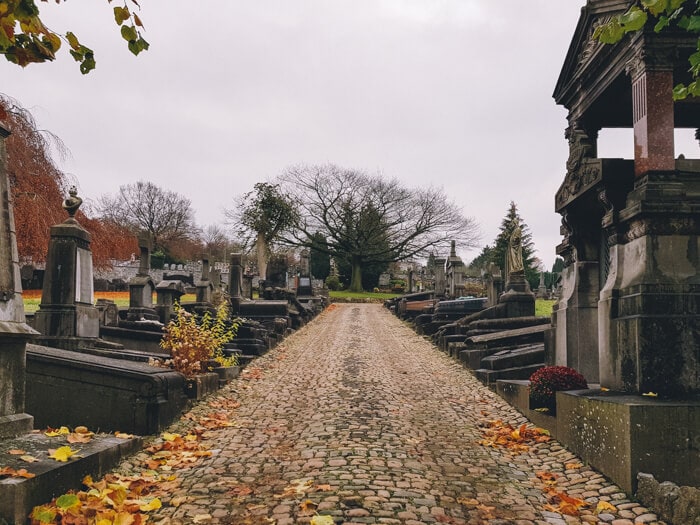
The cemetery of Verviers isn't just any cemetery. It spans 9 hectares and contains a history of the city via its past citizens. Le Parcours du Cimetière or “The route of the cemetery” takes you past 40 unusual graves over the course of about 3 kilometers.
The accompanying brochure tells the stories of the deceased and with it their heritage and the history of Verviers. You'll see a Mausoleum with no less than 56 rooms, the crypt of a large industrial family and the tombs of well-known artists.
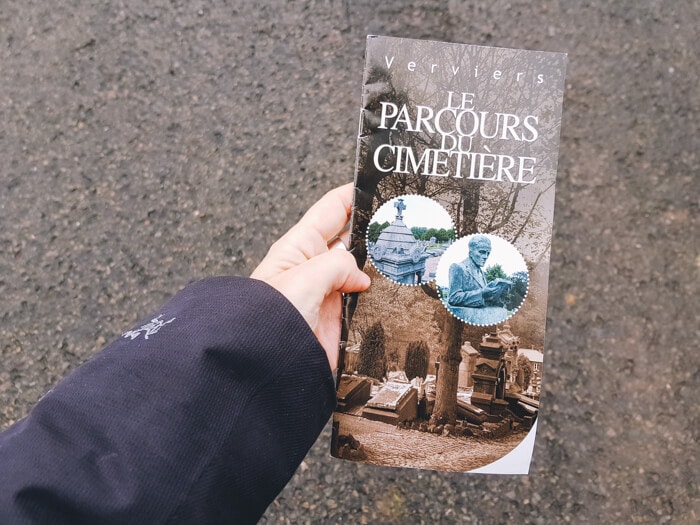
From Verviers, it's only a 20-minute drive to Signal de Botrange, the highest point in Belgium at a staggering height of – brace yourself – 700 meters. I know, I know, it's not that spectacular, but still, it's one of these things you just have to when you have the chance.
The Signal de Botrange lies in the High Fens nature reserve, which is great for hiking all-year-round. In summer, you just need to be aware that some areas might be closed off due to the risk of forest fires.
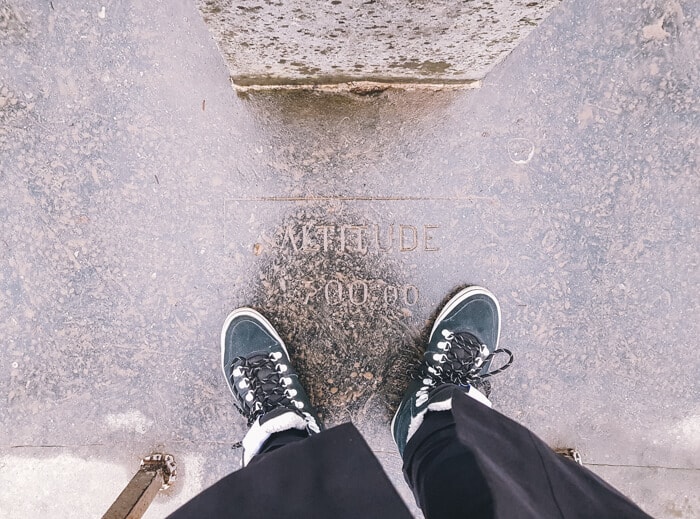
I always use Google Maps as my GPS but when I used it to drive to the Signal de Botrange, it sent me the wrong way when you come from Verviers and have just passed Baraque Michel. The road will split at one point and Google Maps will tell you to continue straight on the Route de la Baraque Michel but if you pay attention, you'll see the signs for the Signal de Botrange pointing left, onto the N676.
Go left and you'll almost immediately see the restaurant and information center of the Signal de Botrange to your right. There's a big free parking from which you can already see the steps leading up to the highest point.
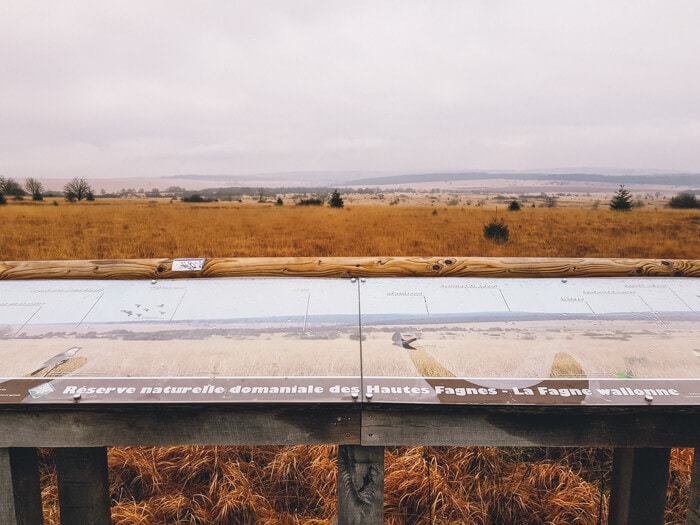
If you have time to go for a walk, you can just cross the street at the information point and the path in front of it will lead you to this viewing point that's also located on different trails.
Having done enough kilometers for the day, I drove to Hotel SleepWood where I'd spend the night as well as dine at the one-site Fine-Food restaurant.
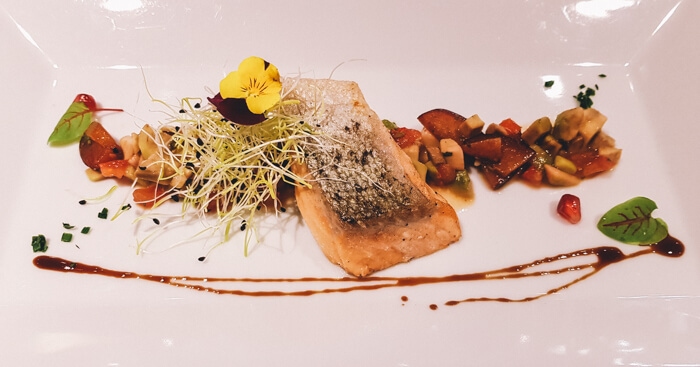
The restaurant is true to its name because I found the food to be refined and well-portioned. I had three little tapas to start, followed by smoked salmon with an avocado salad and then a white fish with vegetables and purple potato. For dessert, I skipped the cheese and had three little sweets.
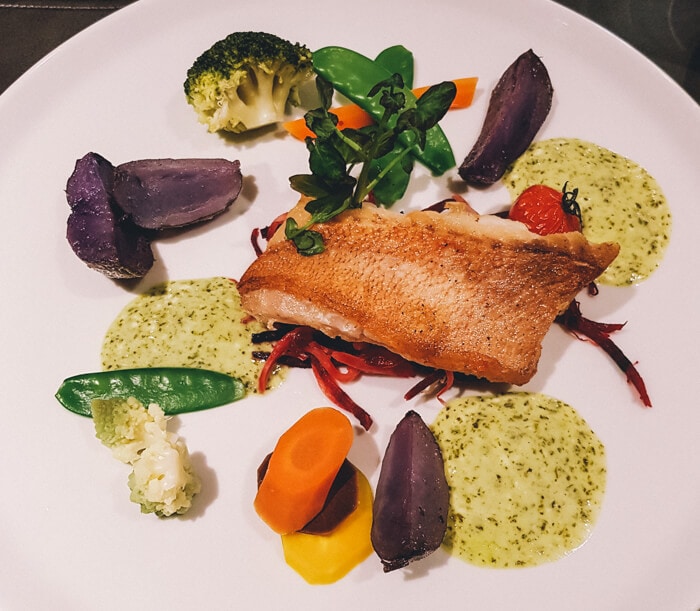
Wooden planks can be held up by ropes to form a table and the big mirror by the sink is placed on rails so you can slide it out and use it as a full standing mirror. It's brilliant in its simplicity.
Also: no light and other switches in a million places. Instead, there's a small screen next to the bed which I first thought was just a digital clock but no, it allows you to control the lights as well as the temperature of the room, which is set to a max of 23 degrees Celcius.
Heating doesn't happen traditionally either but through the walls! It's subtle and works well with the softly present smell of wood. Bliss. When you open the window, the heating turns off automatically.
Each room also has individual air circulation. Air is sucked out via the bathroom, meaning it's never humid in the room, and fresh outside air is blown in again via a device by the wall. It has three stands and you can also turn it off completely if you're a bit chilly.
As I said, there are no coffee or tea facilities in the room but you can always get something from the restaurant downstairs. There's also no minibar but there is a flatscreen tv.
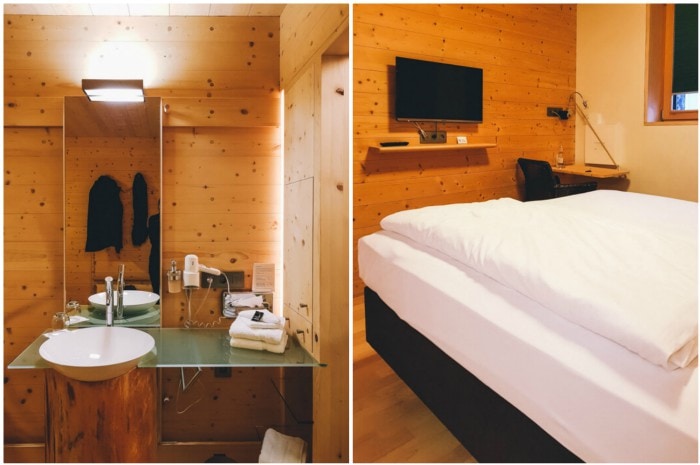
I always just drink tap water but if you like, you can get a free (refillable glass) bottle of still or sparkling water to take up to your room with you.
Even radiation is thought of. The rooms are designed in such a way that there's barely any radiation. I found that my data still worked, though, and each room also has a WiFi router and range extender that's plugged in so that if radiation is something you worry about, you can always unplug it when you don't need it.
And then I haven't mentioned the bed yet. The bed was heaven. It was just super comfortable. If I had been on a vacation, I still would've put the alarm at 7h15 just so that I could enjoy the bed all-morning-long.
Parking Loten is a free parking lot less than five minutes walking from the hotel.
Day 3: Visiting the Crystal Discovery of Val Saint-Lambert
The Crystal Discovery is a museum dedicated to the history of the Val Saint-Lambert Crystal in Seraing, Val Saint-Lambert.
The museum is located in an old Cistercian abbey and showcases the history and artistic evolution of the crystal factory through no less than 250 pieces. A movie shares testimonials from former Val Saint-Lambert workers and it's even possible to attend a live glass-making demonstration at independent glass studio Atelier Christophe Genard.
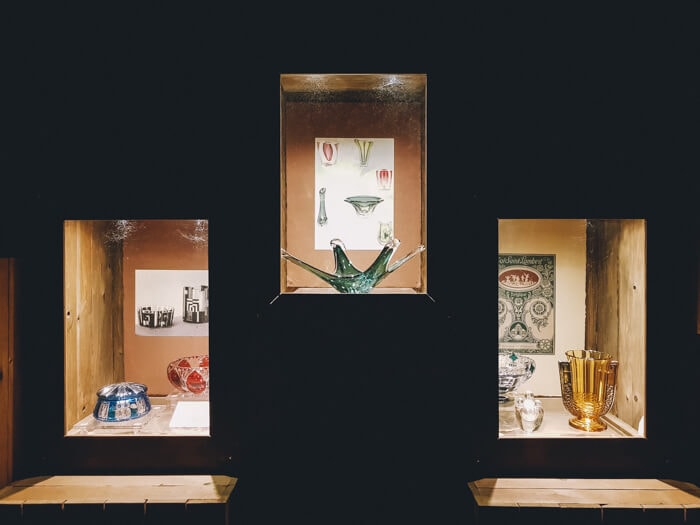
Also fun are the five interactive glass sculptures by the Belgian artist Bernard Tirtiaux and the Scenery Show that takes you through the art of glass-making from its beginning until now.
My favorite parts of the Scenery Show (which is actually a parcour you follow) were the beginning, where you get the impression of being in a hot air balloon flying over the site of the crystal factory as it changed throughout the ages, and the room which shows you various roles glass plays in our everyday lives.
There's also a shop and cafe and visitors can wander around the gardens to see the historical buildings from the outside.
From Val Saint-Lambert it's less than a 10-minute drive to the Préhistomuseum in Flemalle. My main reason for visiting this museum was its bistro.
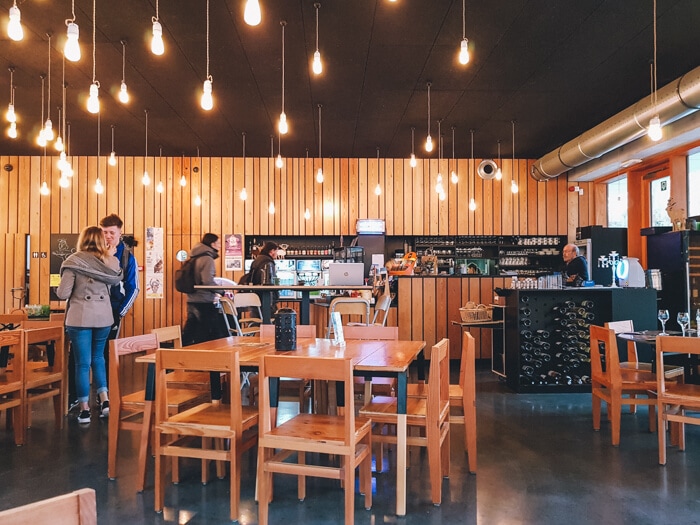
Aside from regular bistro dishes, the Archéobistrot serves a tasting menu that takes you through the ages of men.
Archéobistrot tasting menu includes.
- from Prehistory: a half-raw fish skewer drawn with salt
- from Antiquity: pan-fried old vegetables , mushrooms and feta
- from the Middle Ages: salmon soup
- from Modern Age: a hare sandwich
- from current times: simmering oxtail
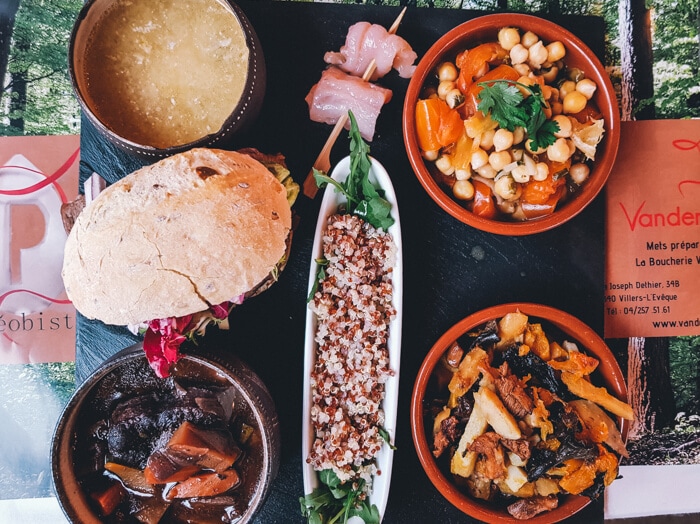
This comes accompanied by a quinoa salad and if you want (I wanted), you can add on a dessert based on a recipe from 1891 which is a pastry with nut cream.
It's possible to visit the bistro without going to the museum but I have to say you'd be missing out.
What is Préhistomuseum?
I had really gone to Flemalle for the Archéobistrot but since I was already there, I took the chance to see the museum as well. I honestly hadn't expected much of it. I'm not a history museum person to start with and I thought I'd be seeing cheesy reenactment scenes made with weird-looking puppets.
If you've ever been to a history museum, you know what I'm talking about. This wasn't anything like it.
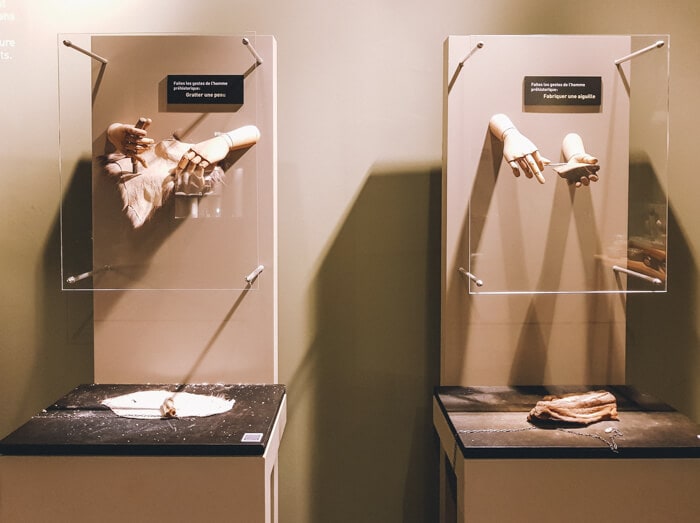
The Préhistomuseum is not just a museum. It's a domain on which you find the exhibition building, an archery course, a maze, reconstructions, a barefoot path, a cave, and a farm with what were the first domesticated animals and plants.
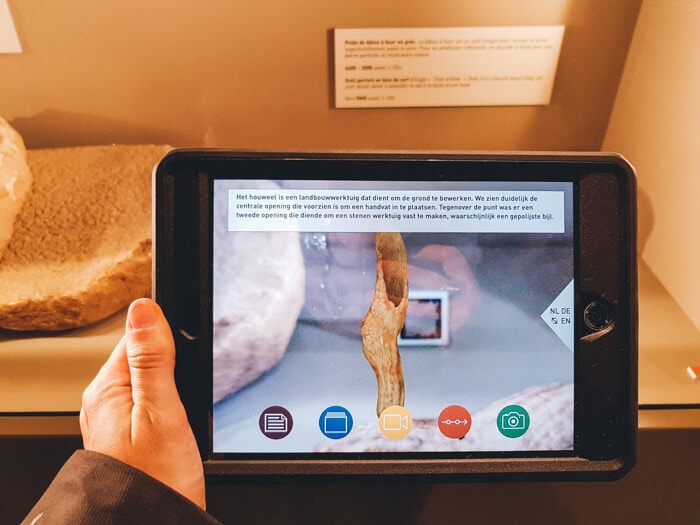
The permanent exhibition is not just a collection of objects. Every room has a bunch of little squares you can scan with a tablet to get more information. There are things you can try out for yourself, like scraping the fur off of animal skin or carving an arrow out of stone, and there's a wall which puts the everyday objects we know now, such as jeans and sneakers, next to similar objects of bygone times.
There's also a hall which teaches you about the different kinds of archeologists there are and that shows you how objects are stored and preserved. It's even possible to book a meeting with an archeologist.
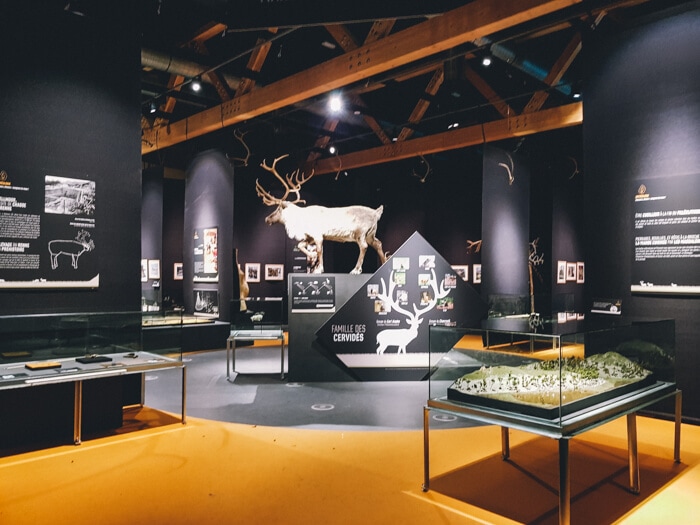
And then there's a room for a temporary exhibition. When I visited – and still until March 17, 2019, it was all about reindeer and their relationship with men, both during Prehistory in Europe and now still with tribes in Siberia. The photos here are worth seeing.
Listed below are the tips to visit Préhistomuseum.
- Upon arrival, go to the exhibition building first . It's here that you learn which activities you can do at what times.
- You'll need to make a reservation for some.
- There's free parking at the museum.
While it is possible to travel around by bus, I highly recommend to rent a car to explore the Province of Liège, especially if you want to go hiking. Traffic in this part of the country is pretty relaxed and in the countryside, it's never to hard to find a (free) parking spot.
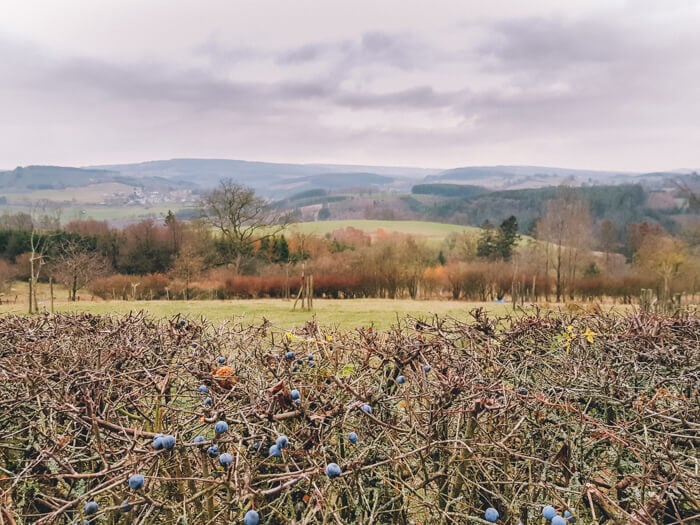
And that was it! I hope the above has gotten you in the mood to come and visit this beautiful province. When you do, make sure to let me know how you liked it!
PIN FOR LATER
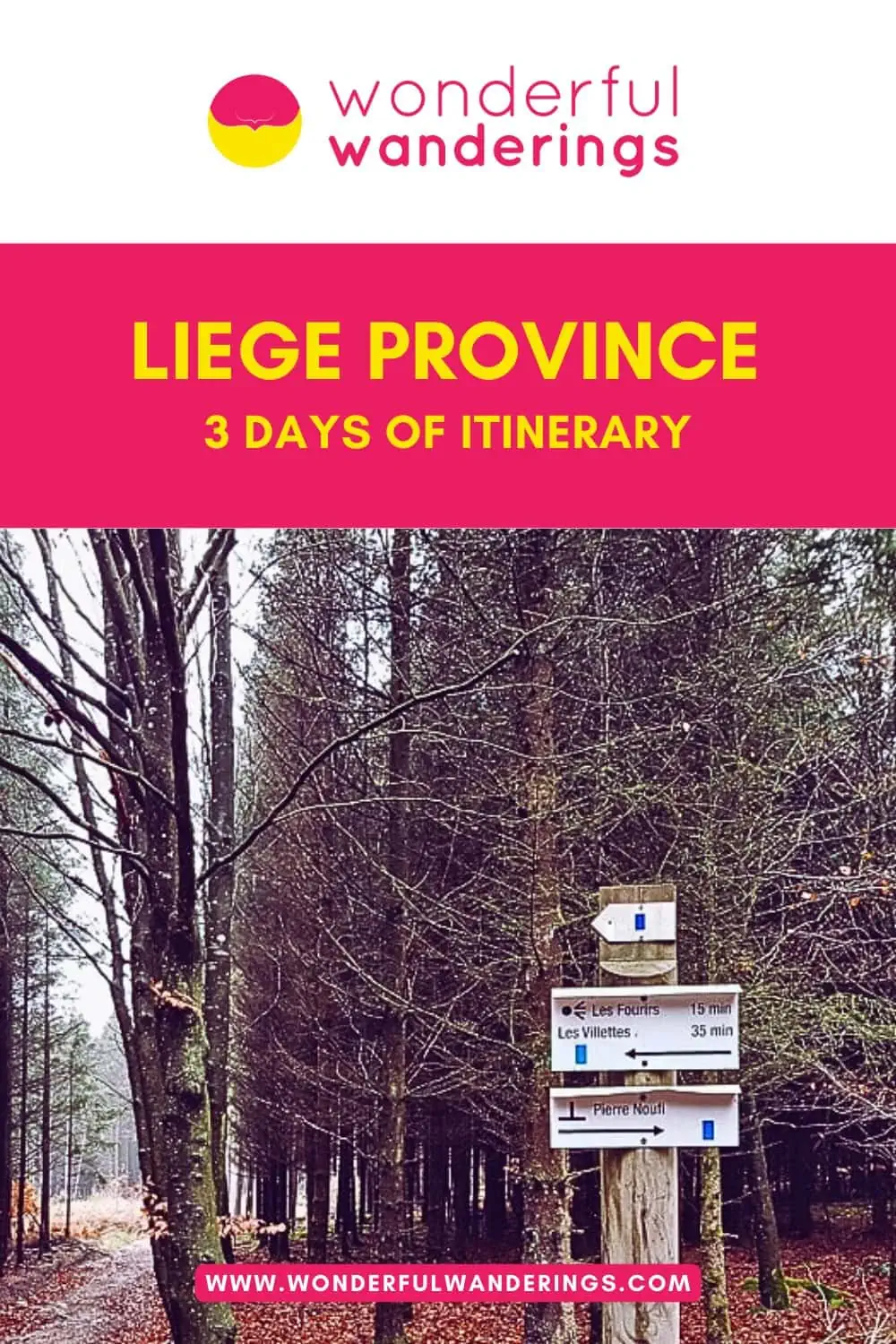
Dates of Holidays in Belgium 2024 [Annually updated]

Namur Travel Guide: 15 Best Attractions to visit in Namur!

Mons Travel Guide: 15 Best things to do in Mons, History, Attractions

Dinant Travel Guide: 17 Attractions to visit in Dinant, History, Hotels & Restaurants

15 Fun things to do in Ypres: A Visitor's Travel Guide

16 Best things to do in Ninove: Travel Guide, History, Attractions, Transportation & Markets

15 Amazing Things to do in Kortrijk: Travel Guide: History, Attractions, Transportation & Markets

15 Top Things to do in Tournai: Travel Guide, History, Attractions, Facts and Transportation

Ghent Christmas Market 2023-2024:🎅 Dates, Location, Attractions

15 Best restaurants in Brussels: Where to eat in Brussels?

19 Best Hotels to stay in Brussels – Neighbourhoods, Luxury, Hostels, Family and Airport Hotels

20 Fun Christmas Markets in Belgium to visit in 2023 – 2024

Mechelen Christmas Market 2023-2024:🎅 Dates, Location, Attractions

Charleroi Christmas Market 2023-2024: 🎅 Dates, Location, Attractions

Mons Christmas Market 2023-2024:🎅 Dates, Location, Attractions

Namur Christmas Market 2023-2024: 🎅 Dates, Location, Attractions

Ostend Christmas Market 2023-2024: 🎅 Dates, Location, Attractions

17 Best Bars in Brussels and their signature Drinks

Dinant Christmas Market 2023-2024:🎅 Dates, Location, Attractions

Louvain-la-Neuve Christmas Market 2023-2024: 🎅 Dates, Location, Attractions

Liege Christmas Market 2023-2024:🎅 Dates, Location, Attractions

10 Best Brussels Museums, Art Galleries and Exhibitions

20 Best things to do in Ardennes: My 4 day itinerary

29 Interesting Facts about Brussels
Brussels Travel Guide: 18 Best Things to Do, History, Facts and Hotels

Brussels Christmas Markets 2023-2024: 🎅 Dates, Location, Attractions

Visiting Hallerbos: The Blue Forest of Belgium

Visiting the Villers Abbey: Location, History and Guide!

C-mine Genk: Mining site turned to Cultural center

Fort Breendonk: Concentration camp turned National Memorial
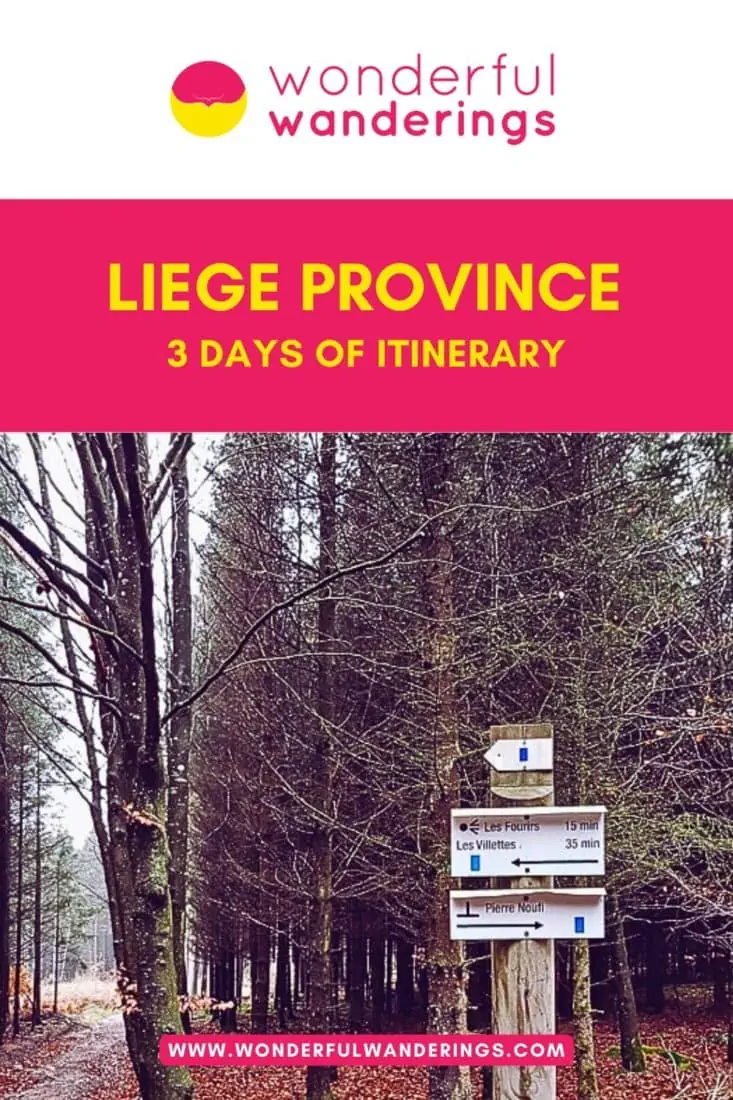
The editorial team at Wonderful Wanderings brings together travel experts with backgrounds in travel writing, web development and digital marketing. The team, through their collaborative effort, provides readers with relevant travel experiences and up-to-date digital content. The vast expertise within the team ensures an informative blend of travel stories and useful online travel guides and trip experiences, built on a foundation of both industry recognition and hands-on global adventures. Learn more about Wonderful Wanderings
Your email address will not be published. Required fields are marked *
Join 58,000+ other Wonderful Wanderers!
As an Amazon Associate I earn from qualifying purchases.
Enter your search
Tour the forts of liège by bike.

For those who love cycling and history, this is the perfect ride for you ! First, we pass by Fort Lantin , one of the region’s unmissable sites. Indeed, it is the only fort of the Fortified Position of Liège to have remained in its original state of 1914.
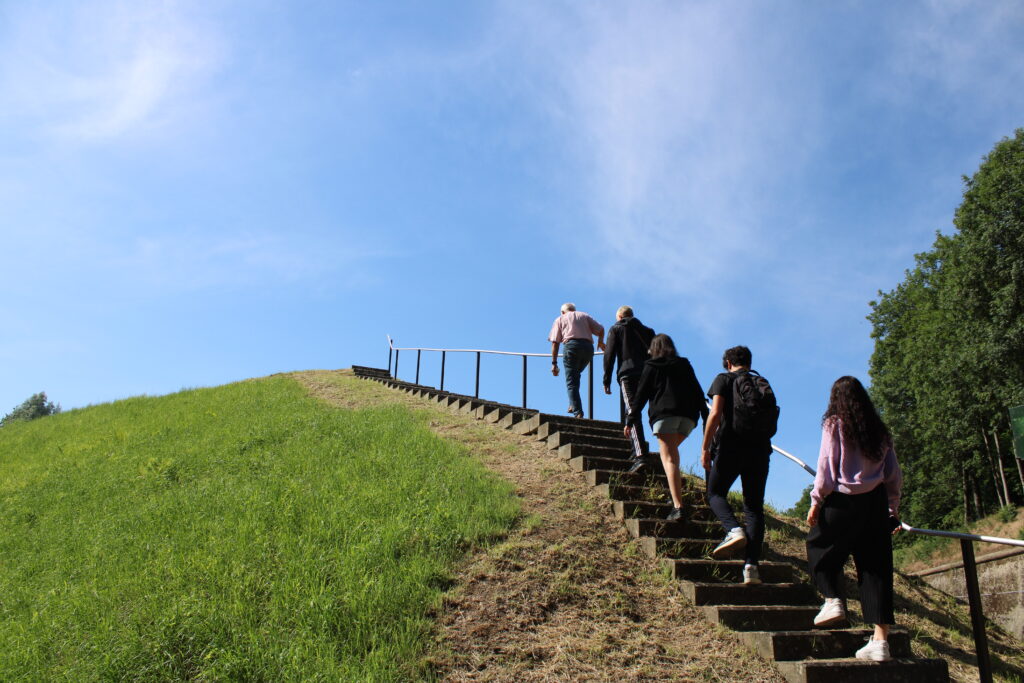
We then continue by the castle of Waroux, classified as an exceptional heritage site of Wallonia. Apart from the exhibitions, groups can visit the castle only on reservation .
Last stop: the National Necropolis of Fort Loncin, a symbol of the Battle of Liège and the heroism of Belgium facing the German attack in 1914. It is preserved in the state which followed its destruction due to the German bombardments. The sight of the wholly overturned fire domes in the middle of staggering craters allows one to imagine the firepower of the Big Bertha guns: a setting and a story that leaves no one untouched. To learn more, a visit to the fort and the museum is possible and allows you to relive the disastrous explosion of the fort.
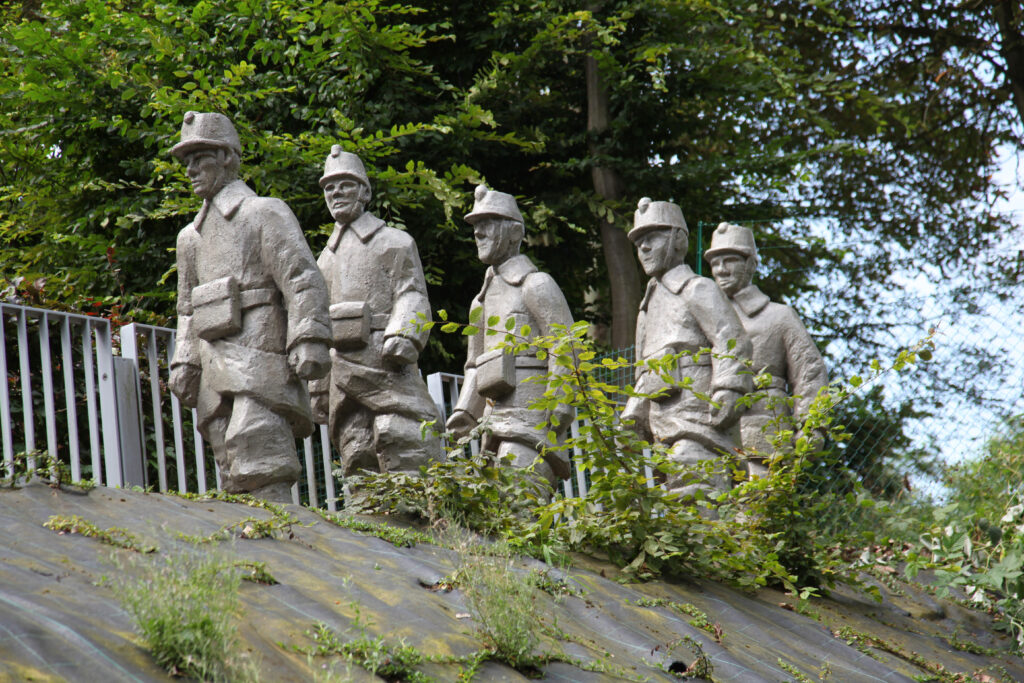
For those who never get tired of history, we advise you to combine the visit to both forts! For groups, the two trips and lunch at Fort Lantin costs 20€.
More information on this tour of the forts by bike is available on the Liège Tourism website or by downloading the tour brochure .
Useful information

IMAGES
VIDEO
COMMENTS
The original twelve forts The twelve Brialmont forts were equipped with 210-mm, 150-mm and 120-mm artillery in armoured metal mountings that could be raised above ground level to fire and then lowered underground for protection.Each fort was provided with enough ammunition and supplies for their garrisons to resist a month's siege. Their concrete walls could resist 210-mm shells.
The forts of Liège: a concrete belt surrounding the city. The Fortified Position of Liege (P.F.L.) consists of 12 fortifications that surrounded the city in 1914, 1916, and 1940. They were heavily armed and built with concrete. Some were even constructed partially underground. Because of their strategic positions, they protected each other ...
The ruined Fort de Loncin, in Ans, in the province of Liège, Belgium, is a powerful memorial to Belgian bravery and the destruction of World War 1.. At 0530 on August 15 th, 1914, after three days of siege, a shell from a German gun scored a direct hit on an ammunition magazine at Fort de Loncin, detonating 12 tons of explosives.The resulting blast destroyed the heart of the fort and killed ...
This fort and museum are ABSOLUTELY worth a visit. The museum explains the battle of Liege, the first major battle of WW1, superbly, and on a light up map it shows the different forts around the city, the defenses and the order of events. The museum also contains an impressive number of artifacts, several of them are 'one of a kind' and ...
The forts built between 1888 and 1891 are in blue (PFL II), the forts built in the 1930s in red (PFL I) Fortified position of Liège. Coordinates. 50°47′49″N 5°40′52″E. / 50.79694°N 5.68111°E / 50.79694; 5.68111. The fortified position of Liège ( French: position fortifiée de Liège [PFL]) was established after the First ...
The Fortress of Liège. At the outset of both World Wars, Belgium's second largest city, Liège, found itself first in the German firing line. Twenty-five years earlier Belgium had prepared for a future invasion by constructing 12 concrete forts in a belt around the city, fortified with German-made guns. The Germans thought neutralising ...
The Fort de Loncin is an exceptional memorial site. Located just a few kilometres from the town centre, it became the symbol of the Battle of Liège when facing the German troops in 1914. ... You will find more details on the Access-i website to plan your visit. find out more about the Great War. Show less. Contact. Address Rue des Héros 15 ...
Fort Lantin is the only fort in the fortified belt of Liege that has not been modified since 1914. A historically remarkable place, a surprising visit with the possibility of sleeping on site. ... You can also combine your visit to the fort with a visit to Fort Loncin, a must-see addition. Discovering other topics . Interwar period - Interwar ...
Fort Tancrémont was one of the last forts of Liege's fortified belt to surrender to the German army during the Second World War. Preserved in its original state, it teaches us a lot about the immense architectural progress achieved in the military field after the First World War. ... A visit to the fort lasts about three hours. Don't ...
The Fort de Barchon, in Liège, Belgium, survived both world wars and is a twin of the Fort de Loncin.We visited this memorial site in Liege, to learn more about its history and construction. Visiting the ruins of Fort de Loncin was remarkable. Because it has remained untouched, since its destruction, it is a powerful tribute to the men who lost their lives.
The high Fens or "hoge venen/hautes fagnes" area is one of the most popular spots for hikers in the country. One of the top favourites in the province is the Ninglinspo Walk with paths from 7 km to 14.6km to suit every ability level. Ninglinspo is known for its beautiful views of the Ardennes. Take a break from Liege's cities to its ...
The Fort de la Chartreuse is a 150-year-old fortification that once defended the Belgian neighborhood of Liège, but is now an abandoned folly that is slowly being overtaken by foliage and graffiti.
You can visit the fort and the museum. It is also possible to combine visits to both forts. Groups are offered an inclusive price of €20 with a tour of the two forts and lunch at Fort Lantin. Difficulty: Easy; Elevation: 64 m; Distance: 20 km; Start: Rue Maréchal Foch - 4430 Ans; Node points to follow: 46 → 66 → 67 → 62 → 45 → 46
The Fort de Fléron ( French pronunciation: [fɔʁ də fleʁɔ̃]) is one of twelve forts built around Liège, Belgium, in the late 19th century. The overall Fortified Position of Liège was a constituent part of the country's National Redoubt. Fort de Fléron was built between 1881 and 1891 according to the plans of General Henri Alexis Brialmont.
The Fort of Pondisse dominates the Meuse Valley and the Albert Canal, seven kilometers from the center of Liege. It is part of the "Fortified Position of Liege," consisting of 12 forts built at the end of the 19th century. ... Don't wait: visit this two-in-one fort and its Secret Itineraries' tour, which will unveil some well-hidden ...
It is one of the best places to visit in Liege, Belgium to learn about regional history and folklore. It covers a variety of subjects including geography, history, politics, culture, art, craft, fashion, economy, and so on. You will have at least 2 hours to tour this museum. 2. Coteaux de la Citadelle.
Jonathan, Loncin is definitely worth a visit, I was lucky enough to be given a tour by one of the english speaking guides there (in May, 2011), the tour took about two and a half hours and was very informative - one of the highlights (?) being the re-creation of the explosion made as the 42 cm. shell penetrated the fort in August 1914.
Sport and relaxation. Sport. Adventure sports. This is one of the 12 forts built by General Brialmont around Lièges. Together with Pontisse on the other side of the Meuse, it was the farther north of Liège. Read more. Rue du Fort, 4671 Barchon. +32 470 99 73 03. [email protected].
Its 17 surface works spread over 75 hectares constitute the centerpiece of the fortified belt of Liege. Similar to forts constructed by the French in the 16th century, Eben-Emael was built in the shape of a pentagon and is surrounded by an impressive array of fortifications against armored attacks. ... Discover the fort during a thematic visit.
Day 2: Visiting the Caves of Remouchamps. The Caves of Remouchamps are one of the larger attractions in the area. They were discovered in 1828 and have been open to the public since 1912. You can only visit them on a guided tour and tours run throughout the day.
Some parts of Liege definitely deserve a visit: The cathedral , the "Mountagne de bueren" or the citadel, but surely... See way to experience (1) 6. Musee Curtius (Curtius Museum) 274. Speciality Museums. By 773nicholasn. The Museum is nice and free the 1st Sunday of the month.
To learn more, a visit to the fort and the museum is possible and allows you to relive the disastrous explosion of the fort. For those who never get tired of history, we advise you to combine the visit to both forts! For groups, the two trips and lunch at Fort Lantin costs 20€. More information on this tour of the forts by bike is available ...
Near liege Fort Eben-Emael it was state of the art for its time. germans took it out by inserting paratroopers loaded in gliders to minimise sound and used hollow charges during the raid and eliminated all the turrets in 15 minutes. ... Kinir9001 • I highly recommend this. Try to book an official visit with a guide, it's really worth it ...